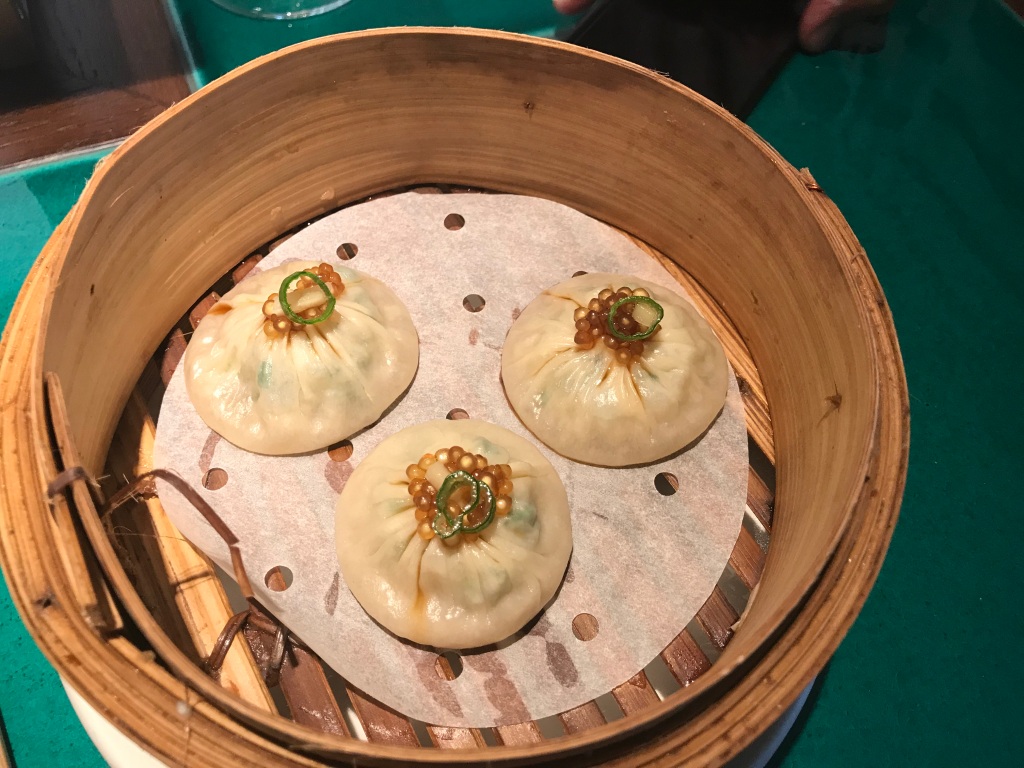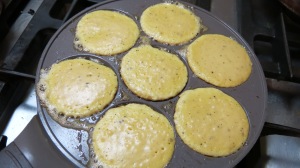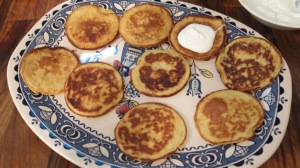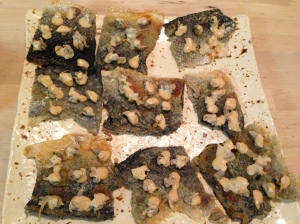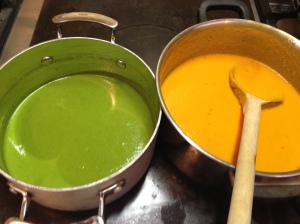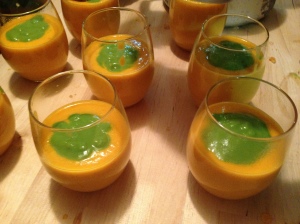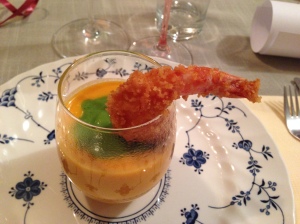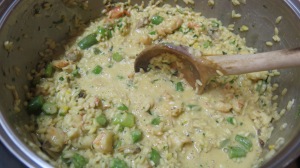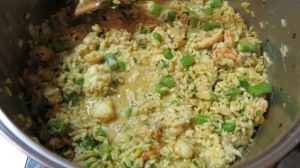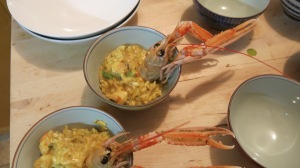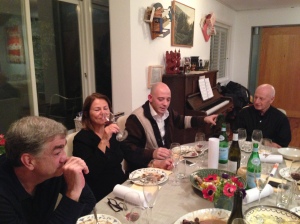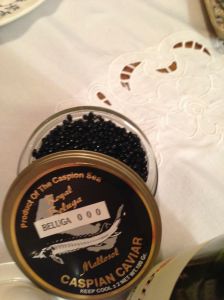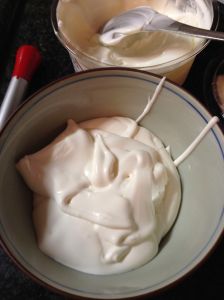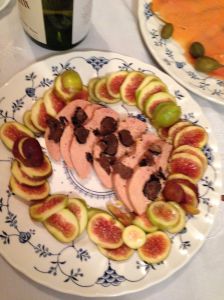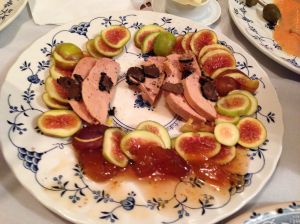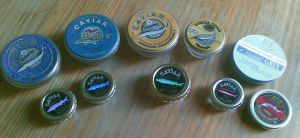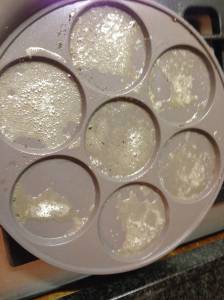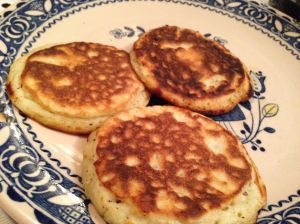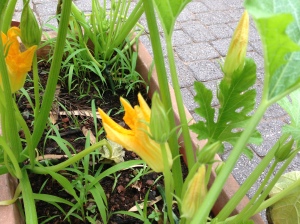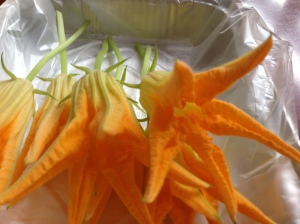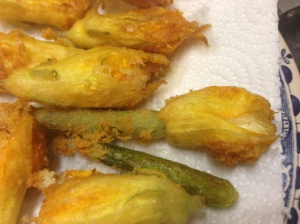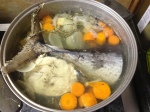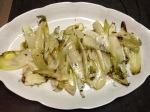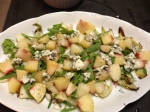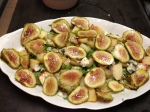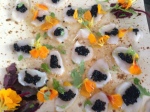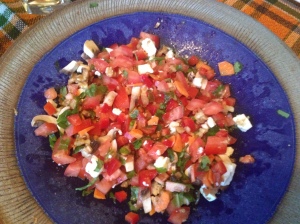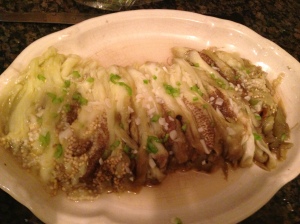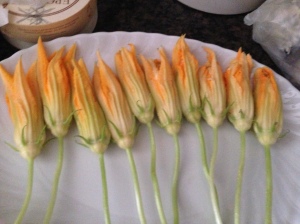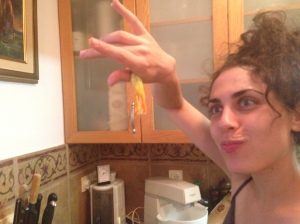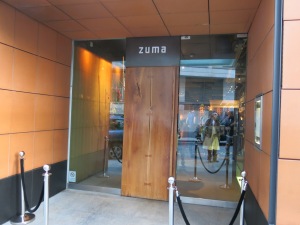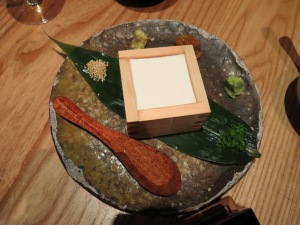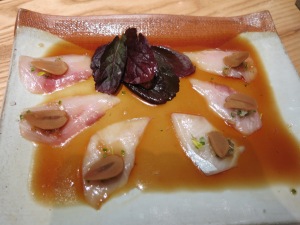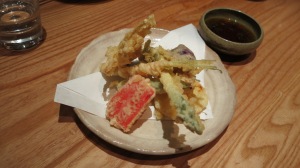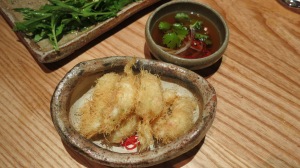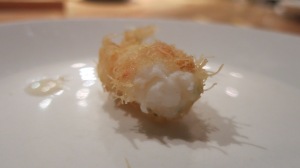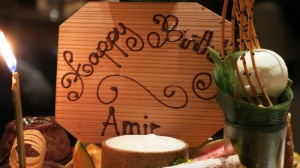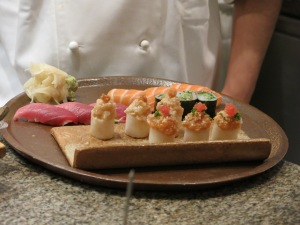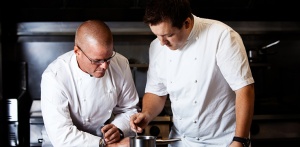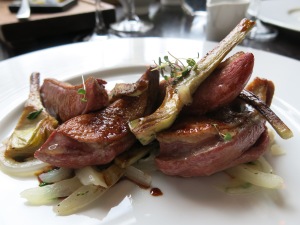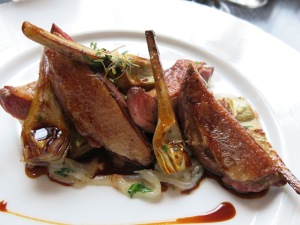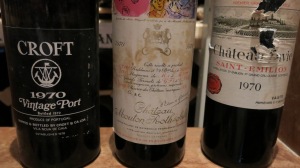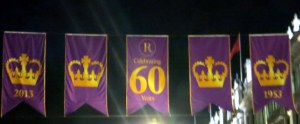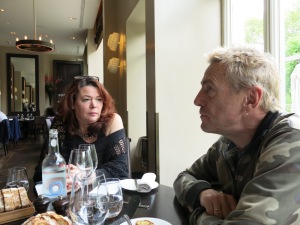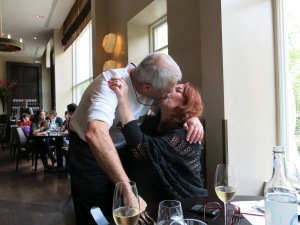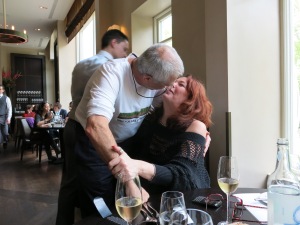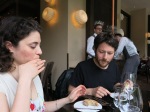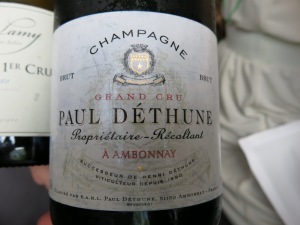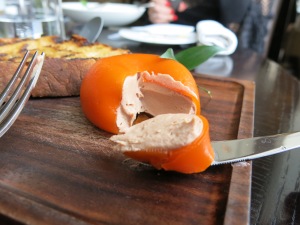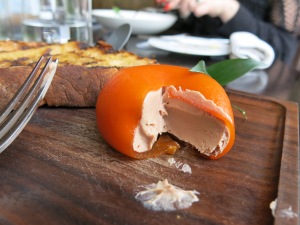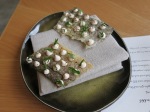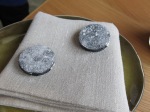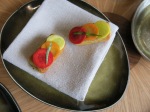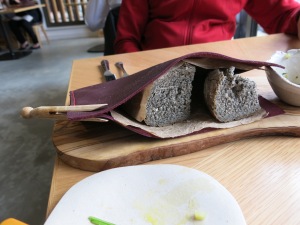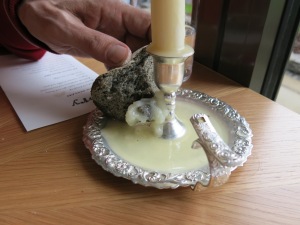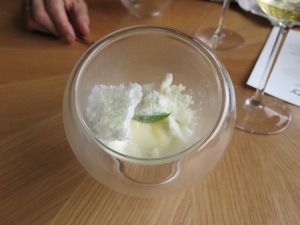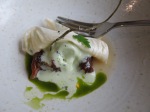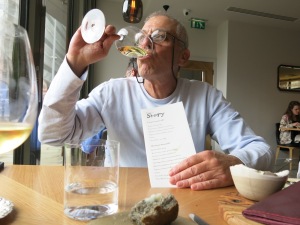Category: WINE & FOOD
Wine and Dine with SPIKE

Chef Ferran Adrià – El Bulli
Spike was my best friend (your Bestie) as Abigail my daughter told me, when I found the strength to tell her of his passing away.
Since Julia his devoted sister told me of his passing away there’s a void in my chest, a sense of disbelief thumping the unbelievable fact Spikey is gone!
Today August 15th is SPIKEY’S BIRTHDAY,
Time to remember and have fun with the wonders of good memories.
So we Start with a song he sang for me 10 years ago for my 60th birthday. (press play…)
Spike knew and befriended so many people in so many different aspects of cultural living, the Arts, Theatre, Music, Movies, and Food – chefs and restauranteurs.
He was also the “Fix it up chappy.” (as Dr Seuss would describe), He could organize entrance to any: ..music Gigs (“spikey, Bob Dylan is in town …with Mark Knopfler…” and tickets would be arranged),
Of course some movie premiers, and through his foody connections a table at (Fully booked) newly opened restaurants.
Sometimes my requests were a burden of achieving the “impossible” to which he acquiesced being his caring self: “FOR THE TEAM” he used to say and was proud of achieving the task at hand.
He really liked food and wine, He was a great companion to a meal and like most of us remembered the fun of meals in many great restaurants we went to together. For us, eating a good meal at great restaurants was an excitement filled with pleasure and fun.
And we had so many on our list, some of which I recall now with much love and longing.
But I will start with a meal we talked and laughed about on our last meeting (a few days before he passed away): our Lunch at Pierre Koffmann’s La Tante Claire in Royal Hospital Rd. Chelsea. All the way to the restaurant I did not stop talking about The signature dish of the restaurant’s legendary dish: Pied de Cochon, pig’s trotter with chicken mousseline, sweetbreads and morels, that Marco Pierre White, (amongst my favorite chefs ever), has called this his “favourite dish of all time” amongst other superlatives
…

We arrive and get seated around one of the smaller round tables in the centre of the room, the maître d’ comes to take our order Spike (as always) ordered a Bloody Mary (Very spicy hot please) I had a look at the wine menu and a glimpse at the menu but had only one thing in mind, Pied de Cochon please, M D’ : “ sorry sir, pied de cochin is served only for dinner, to Spike’s amazement I said: “look here sir, with all due respect, I have travelled 6000 miles just to have this dish and fly back home, so either you ask the chef or maybe I should go and have a word with him myself? The service is more than correct (and efficient) at La Tante Claire, “I will see what I can do said the polite yet amazed Maitre D’hotel (he is used to British politeness, but I come from the middle east, yet to my credit, this dish takes long to prepare and long to cook so.. it is probably ready to serve by now 3-4 hours prior to dinner service time.
In the meantime, the first courses from the a la carte menu were served, Coquilles Saint-Jacque in calamari ink (sauce à l’encre de seiche), and the Langoustines with quail egg and hollandaise au foie Gras, they were exquisite BTW, and low and behold for the main course I received my Pied de cochon it looked out of this world in its red colour next to a white potato mash made with duck fat from another world and crispy pig’s skin decoration with port and Madeira sauce … D E V I N E !! The stuffing of the veal sweetbreads morel mushrooms and the chicken breast mousseline, a delicacy that melts in your mouth, covers the tongue and palate with a buttery comforting layer of sweet gelatin rich as Godly Nectar it is indeed one of the best if not THE BEST dish I ever had. A masterpiece!
Richard Corrigan – Lindsay House in Soho, London
Spike invited me to dine with (his mate Stephen Fry) at Richard Corrigan’s restaurant Lindsay House in Soho, (formerly at 21 Romilly Street, Soho, London, W1D 5AF)
This was more like a club or a house than a restaurant you rang the doorbell to enter its a quite cosy little place, it was claimed in 1998 or 1999 to be the best deal in town considering general ambience, food creativity, and the price for a 3-course lunch.
Apart from the wonderful company, we had a great lunch :
for first I had Tomato and Melon Gazpacho with Langoustines or red and orange pepper’s gazpacho mixed with “langoustine milk” crushed langoustines shells bisque mixed into the Gazpacho adorned by a quenelle of green herb pesto (I Think, it’s been a long time…)
and for main I had ‘a favorite of mine cooked to perfection Pigeon.
From Here we went to the Groucho Club just around the corner at 45 Dean Street, Spike is one of the founding members and can get in visitors, me.
After a quick visit to the bar, off we moved to the Billiards room where we had a long doubles session with Stephan Spike me and Simon. A fun day indeed.
Bibendum at the Michelin House
81 Fulham Road London SW3 6RD
Chef Simon Hopkinson is yet another friend of Spikey… He knows all the right people, good for me \ us, he arranges, we Enjoy I top the bill (only right so!), this is between Spikes’ first flat in Brixton, and my place in Pimlico so we meet halfway Yet another meal that got to be published (in Hebrew) in Magazine “CHEF” I was writing monthly at the time.
When Simon’s book Roast Chicken and Other Stories, 1994, came out Spike sent me his complimentary copy (for old times’ sake)

Kensington place – Rowley Leigh another acquiescence of Spike, serving modern British food in deliberately informal and noisy surroundings, very much like a London version of a French neighbourhood brasserie serving my favourite dish at the restaurant: Chicken and goats cheese mousse – olive Tapenade. I begged Spikey to get me the recipe for this dish from Rowley. When it arrived, this small savoury mousse, turned out to be quite a complicated and time-consuming dish to prepare if you follow the instructions to the letter. DELIGHT!

River Café
Oy I’m off to cut hair for the Rogers family, Ruth Rogers wife of Richard Rogers THE architect. She took over a disused warehouse building next door to her husband’s Offices by the river and turned it with a friend Rose Gray, into an Italian Restaurant. I did not need an introduction as it has already been a well-known establishment. While waiting for Spike to finish his grooming chores, I enjoyed watching the gathering of the restaurant staff for their pre-service lunch of plain pasta in butter and Sage tagliatelle with Greens side salad and final instructions for the coming service.

The Ledbury – another lunch this time in Photos
We treated ourselves for pudding with a 1950 BANYULS what a delight of a dessert wine at over 40 year old a nectar which would easily keep for another century.
Dabos – Lunch with another good friend of Spike, Varda (my wife ), we waited for him by the table, used to him not being the most punctual person, when all the time he was enjoying one or two of their Special Very Hot Bloody Mary at the Basement Bar. The rest in the Photos that follow.
Hummus and Falafel at Abu Shukri , the old city JERUSALEM
In my mind The best Hummus in Town !!!
A meal at Abu Shukri cannot be complete without a Kunafa (Knaphe in Arabic) and Baklava at
Jaffar Sweets – Khan Al-Zeit Street, Old city Jerusalem (take a right turn at the fork down Nablus gate towards the Via DOLOROZA )
A meal at A Wong – Forbidden City
in my book the best Chinese / dim sum in Town by Far (now at 2 Michelin stars) what a meal, a tasting menu left for Mr. Wong to choose. Traditional Chinese dishes in disguise Rabit meat as a carrot, a mushroom that is not a mushroom and many other surprises.
Some other restaurant dining, with SPIKE you can read in the following blog posts :
https://wine4soul.com/2012/05/27/lunch-at-the-fat-duck/
https://wine4soul.com/2013/06/21/lunch-dinner-by-hb-part-1/
https://wine4soul.com/2013/07/01/lunch-dinner-hb-part-ii-main-dishes/
https://wine4soul.com/2013/07/08/dinner-by-hb-desserts/
https://wine4soul.com/2013/06/09/restaurant-story-london/
https://wine4soul.com/2013/08/14/a-matter-of-the-heart/
Quite rightly Spike said: “Heston Blumenthal must be as mad as a brush!” What a load of fun… And that is the basic idea behind all this thing called food… innit?
Food at Home
On his visits to Israel Spikey used to stay with us and I used to boast some Home cooking
and wine from our cellar. God knows how many fine Meursaults and Montrachets were drunk through his visits to everyone’s delight.


There are so many more Restaurants we have visited and enjoyed but I guess I gave you a taste of the basic idea and that should surface !!
St John Restaurant, owned by another one of his besties Fergus Henderson in fact he was a sort of “family member” at Fergus and Margot house. So when the Complete Nose to Tail book was published he sent me a birthday present.
We visited St. John in early 1995 a few months after it opened, Peas in the Pod as one of the starters, a genius outrage and why not? It may seem a CHUTZPA to some of the restaurant diners but I come from the middle east, In the Arab Villages and towns, around early May-mid June green roasted chickpeas in their pod, are being sold salted in newspaper cones to the delight of all. They are called H’amla (H’amel meaning Pregnant). Basically Hummus in Hebrew.

and it was the last Restaurant we visited together (just a few months before he passed away on Tuesday, October 11th 2022) one of his / my favourite restaurants
As St. John the Evangelist is known to be a patron saint of a prolific nature, but he is mainly identified as the patron saint of love, loyalty, friendships, and authors, How more becoming can it be?
BTW the very same St. John and Peter were the only two apostles sent by Jesus to prepare the final Passover meal which was the last meal for Jesus, so he’s kind of a food

Dear Spikey

After the touching service, we had at Colchester and the “wake” that followed, we (Lisa, Garry, Sheila, Linda, (uncle) Bob and Louise, Linda and I), decided to have Lunch in your Honor, in one of your favourite Oyster Joints in Mersea Island – The Company Shed.
And there we all are …
Cheers my dear friend, and as Groucho Marx’s supposedly last words were:
“Die, my dear? Why that’s the last thing I’ll do”
So long dear friend, I miss you every day
Your Bestie
AMIR – THE WINE GUIDE
A meal with Etienne Hugel – The Holy Land 2012 – part 2
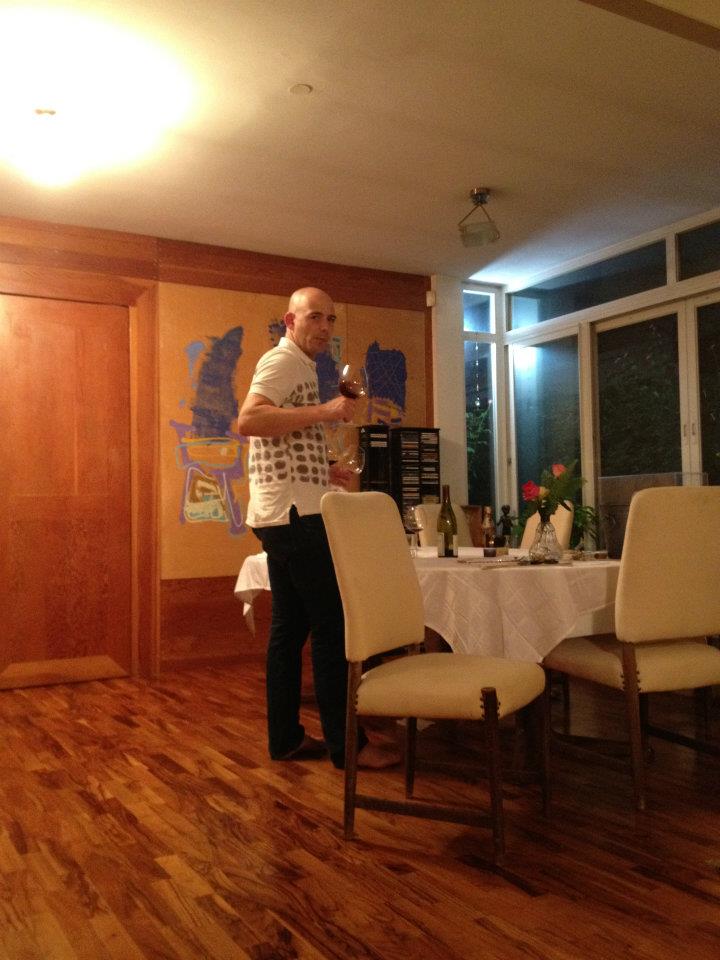 …In the mean time our “sommelier” Yair, opened the two reds on offer:
…In the mean time our “sommelier” Yair, opened the two reds on offer:
Vosne- Romanee 1 Cru, Les Suchots Domaine Confuron-Cotetidot 2006
And the 2006 Charmes-Chambertin Tres Vieilles Vignes Grand Cru, Domaine Joseph Roty, these can breath for the time being…at least until the lamb is properly roasted…
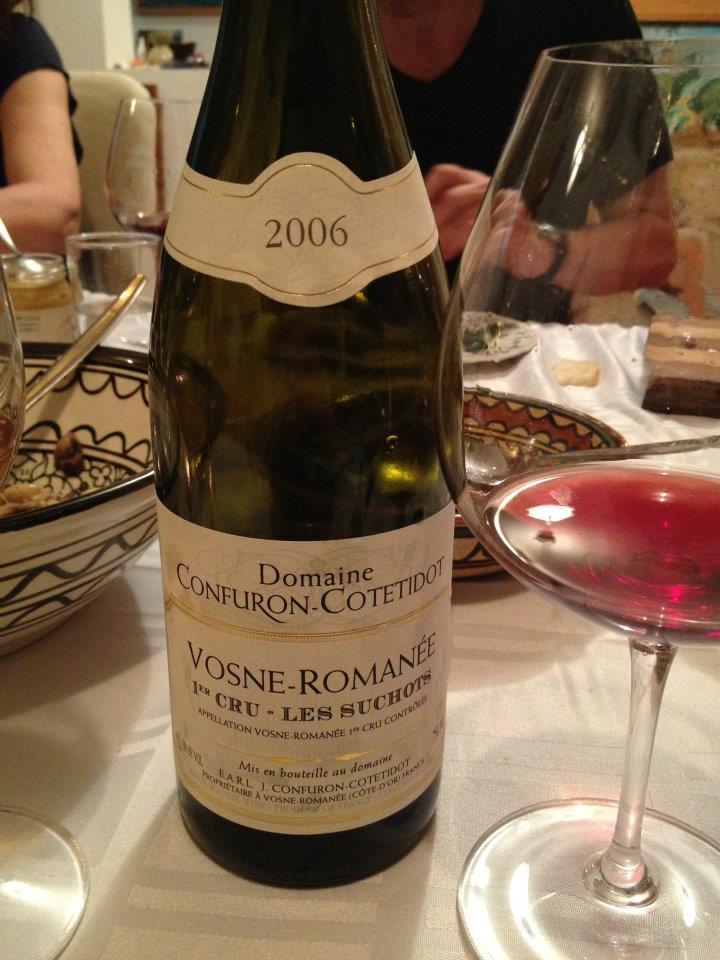
The Vosne Romanee from Domaine J. Confuron Cotetidot , is a highly suitable wine for the occasion since the Confuron family are an old winegrowers family, (since the seventeenth century), they even have a strain of Pinot Noir named after them – Pinot Confuron. The domaine has some Grands Crus vineyards and “our” Premier Cru vineyard of Les Suchots, certainly one of the very top domaines of the Côte de Nuits. The tradition of whole-bunch fermentation is still practiced, producing this extra deep scent of berries plums and ripe dark red fruits. One of the strengths of Confuron Cotetidot wines is their ability to age and develop, (hence the long decanting time). I guess our state of mind will allow them to be approachable in the medium term as well.
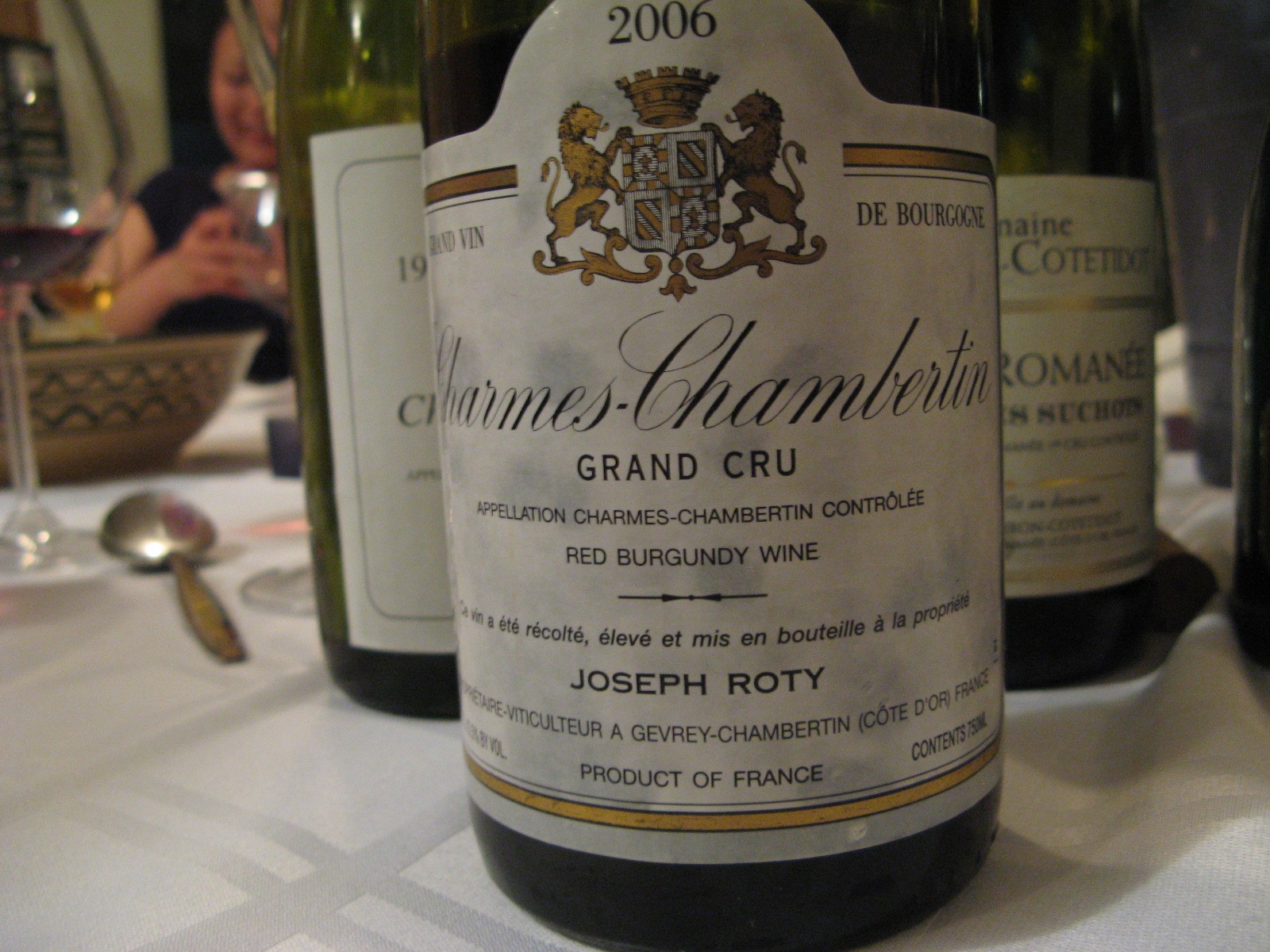 The 2006 Charmes-Chambertin, Très Vieilles-Vignes, Grand Cru, Joseph Roty, Côte de Nuits, is a deep red-ruby almost purple wine. filled with deep notes of black cherry, liquorice, flint , leather and wet soil. needed quite a long time to open, eventually exposing the sweet flavours of dark berries and spiced strawberry confiture reflecting the full ripeness of the 2006, yet still retaining enough acidity to keep the fruit freshness and balance for it’s anticipated longevity. (another bottle opened several years ahead of time…)
The 2006 Charmes-Chambertin, Très Vieilles-Vignes, Grand Cru, Joseph Roty, Côte de Nuits, is a deep red-ruby almost purple wine. filled with deep notes of black cherry, liquorice, flint , leather and wet soil. needed quite a long time to open, eventually exposing the sweet flavours of dark berries and spiced strawberry confiture reflecting the full ripeness of the 2006, yet still retaining enough acidity to keep the fruit freshness and balance for it’s anticipated longevity. (another bottle opened several years ahead of time…)

Our wines are slowly evolving in their decanters and the leg of lamb properly rested, it’s juices evenly spread within, were “calling” us back to the table, Etienne following me back to the kitchen, as I steamed the tender spinach, cut the oven baked shimeji mushrooms off their stem, and the roast potatoes, all in their serving dishes and off to the table where our first red the Vosne Romane , Les Suchots 2006, was already poured to glasses,
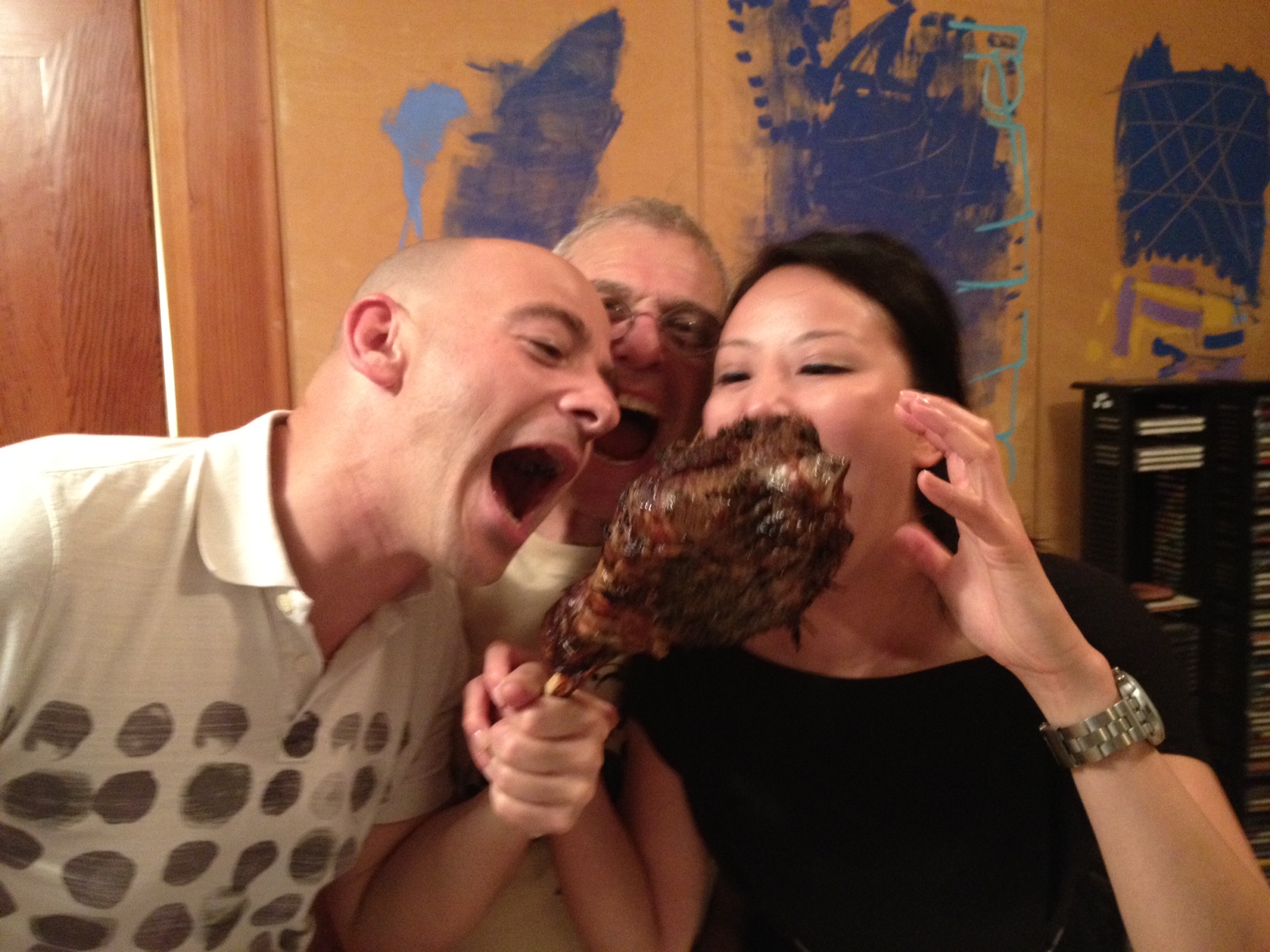
Etienne insisted on the joint being carved at the table, not before he orchestrated several photos with the roasted joint still intact (as you can see),
he watched over me, as I carved the joint of meat, nice and juicy, steaming off the aroma of thyme, rosemary, mint, and a delicate touch of garlic, just as intended (it does not always come out like that, lucky again…)

There was lot of everything to be had and we dug into it, perfectly paired with the wines. The one that followed, the: Charmes. Chambertin Grand Cru, Joseph Roty 2006, was equally well paired with the dish, and so we took our time, enjoying our main course commenting on the wines and food and Etienne’s stories of his “holy land” impressions, he really enjoyed visiting Jerusalem and the Galilee following historical footsteps of 3000 Years of human religious history, than recalling his recent visit to Beirut Lebanon, his joy of meeting old friends in Beirut, and I was envious, political boundaries forbid me from visiting Lebanon, the city I heard about from my father who studied there in the mid 1940’s describing in details the amazing pastry sweets, the cool Booza (a local ice cream with Mastic and Salep, which provides it with the ability to resist melting at the speed that other regular ice creams are affected by, thus withstanding the local heat of the summer) it has an elastic chewing gum quality (extra special touch on the tongue and palate, Devine!!) how would I know? They have a few places in Jaffa, Galilee and other Arab neighbourhood who still make them, with a varying degree of success. I read that In the Old City of Damascus, there is a shop called Bakdash, بكداش that is famous throughout the Arab world for its ice cream and gum Arabic, used to be a popular attraction for tourists, who knows if it still exists, after all we live in a turbulent neighbourhood…, I would like to think it is still there, after all places of tradition, know how, secret recipes and excellence should last forever (very much like Hugel family wines.)
Etienne was not talking specifically about his own wines, he spoke of all the wines upon their specific merit, which is commendable, after all we all know people who can’t stop talking about themselves or their own wine which tends to be tedious sometimes but not in this case.
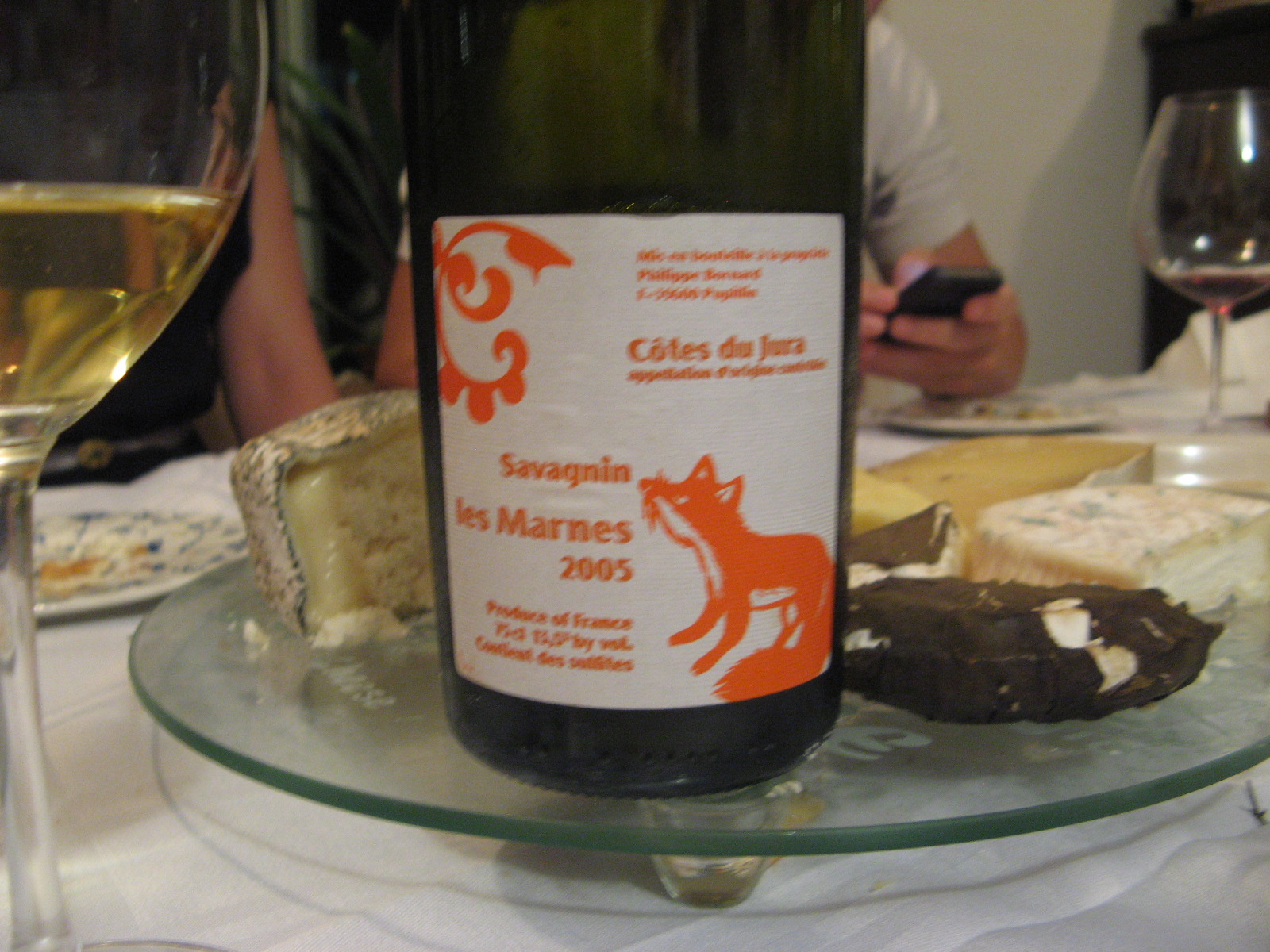 We cleared the table off the empty main course dishes ready to receive our “cheese and biscuits”.
We cleared the table off the empty main course dishes ready to receive our “cheese and biscuits”.
A very special wine accompanied our cheese Philippe Bornard -“Les Marnes” Cotes Du Jura 2005 a wine from the village of Pupillin near Arbois and the Swiss border, this is the “home” of “vin Jaune” also made from 100% Savagnin grape, It does not have the same deep dry sherry quality of proper vin jaune, as it is not left to oxidise under a film of yeast, known as the voile, on the wine’s surface for almost six years but rather undergoes a different 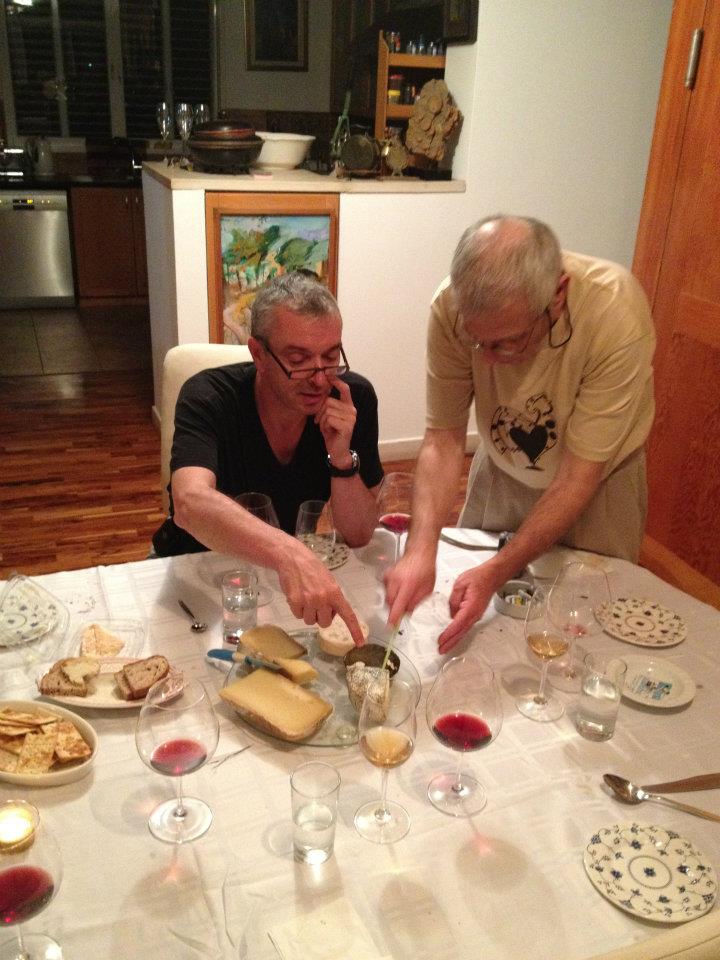 process, at first the wine begins a long, slow maceration in fiberglass container, then moved to large older oak barrels for maturation, which lasts about one year. Wines are of two appellations: Côtes du Jura as is our wine, and Arbois-Pupillin, and reflect beautifully the terroir of the Jura. This is a wine that shows a masterful balance between aromatic richness and minerality. All the meticulous work and emotion of Philippe Bornard is revealed in this great wine. The vinification under the yeasts – “voile”, gives birth to a Savagnin that mixes roast hazelnut and walnut yeasty aromas with white fruit, superb bottle.Bullseye choice for the cheeses (Thanks Judy…)
process, at first the wine begins a long, slow maceration in fiberglass container, then moved to large older oak barrels for maturation, which lasts about one year. Wines are of two appellations: Côtes du Jura as is our wine, and Arbois-Pupillin, and reflect beautifully the terroir of the Jura. This is a wine that shows a masterful balance between aromatic richness and minerality. All the meticulous work and emotion of Philippe Bornard is revealed in this great wine. The vinification under the yeasts – “voile”, gives birth to a Savagnin that mixes roast hazelnut and walnut yeasty aromas with white fruit, superb bottle.Bullseye choice for the cheeses (Thanks Judy…)

Halfway through Etienne could not resist the temptation of pouring the Nectar of the evening – Hugel & Fils Gewurztraminer Selection de Grains Nobles, 1976, an amazingly perfumed and aromatic wine, scent of botrytis engulfs you as you swirl the wine in the glass white peach mango and passion fruit juice, shooting out of the glass enchanting the palate with it’s smoothness, light fruity sweetness emitting the scent from within upwards sublime! (since 1976 the next vintage this wine was produced was 1988) What a delight that went so well with our cheese and dessert : Tart Tatin of Pears and Ginger, this is a take off on Marco Pierre white award winning dessert from the mid 1990’s with an added twist of ginger julienne and slivers to fit Alsacien grape verities, and it did .. at one stage Etienne “grabbed” the serving plate and “devoured” the tart from the large plate to everyones delight.

The incident that followed before coffee and petit fours were served, is private between us five and will remain between us four (now that Etienne has taken the secret to his grave, and we will all in turn…) all I can tell you about it is Etienne comment: Ai Yai Yai…!!!
The next morning after all the sweat, tears of laughter and blood of course…when everyone was gone I opened the Pink Box of delights, and what a sweet surprise!! it was a box of the best ever tiny Baklava pastries from Douaihy – Lebanese Sweets, full of goodies with a taste that still lingers on the tip of my tongue, excellence in mid eastern pastry making, my favourite sweet!! from the most excellent but “forbidden source” the city of Beirut, and my fathers stories all came into context, imagine just one hour north of the border!!! a place I would visit every weekend if only possible.
My friend Etienne is gone but not the memories of this warm night in May 2012, this was my first and last meeting with him in person we kept in touch and planned to meet later this year but alas it was not to be.
Farewell my dear friend, these fragile tastes and smells will endure, more persistent, more faithful, and will remain poised a long time, like our souls, remembering, waiting, hoping, amid the ruins of all the rest.
Sweet rose, fair flower, untimely plucked, soon faded, Plucked in the bud and faded in the spring. Bright orient pearl, alack, too timely shaded. Fair creature, killed too soon by death’s sharp sting, Like a green plum that hangs upon a tree, And falls through wind before the fall should be. I weep for thee and yet no cause I have, For why thou left’st me nothing in thy will. And yet thou left’st me more than I did crave, For why I crave`d nothing of thee still: O yes, dear friend, I pardon crave of thee, Thy discontent thou didst bequeath to me. sonnet 10-"The passionate pilgrim" by W. Shakespeare (1599 edition)
A meal with Etienne Hugel – The Holy Land 2012 – part 1

Two weeks ago, my friend Etienne Hugel passed away in a most sudden and unexpected manner, although there is no consolation for such a loss, the many good memories he left behind may console his friends and especially his family; his beloved wife Kaoru, his son Jean Frédéric his daughter Charlotte and the whole Hugel family.
.
“But when from a long-distant past nothing subsists, after the people are dead, after the things are broken and scattered, taste and smell alone, more fragile but more enduring, more unsubstantial, more persistent, more faithful, remain poised a long time, like souls, remembering, waiting, hoping, amid the ruins of all the rest; and bear unflinchingly, in the tiny and almost impalpable drop of their essence, the vast structure of recollection.” Marcel Proust, In Search of Lost Time (1913)
This is one of those taste and smell memories…
It was mid May 2012 during one of our “Saturday lunch” gatherings with my friend Judy Chang , she said: “my friend Etienne Hugel a winer from Alsace is coming for a three day visit to Israel , how about you hosting an intimate dinner with Etienne?”.
It is not everyday that I get to host a real member from the Aristocracy of European winemakers: The Primum Familiae Vini –(in latin) or First Families of Wine, the eleven families that belong to this exclusive ‘club’, where the criteria for membership are: quality and continuous family ownership.
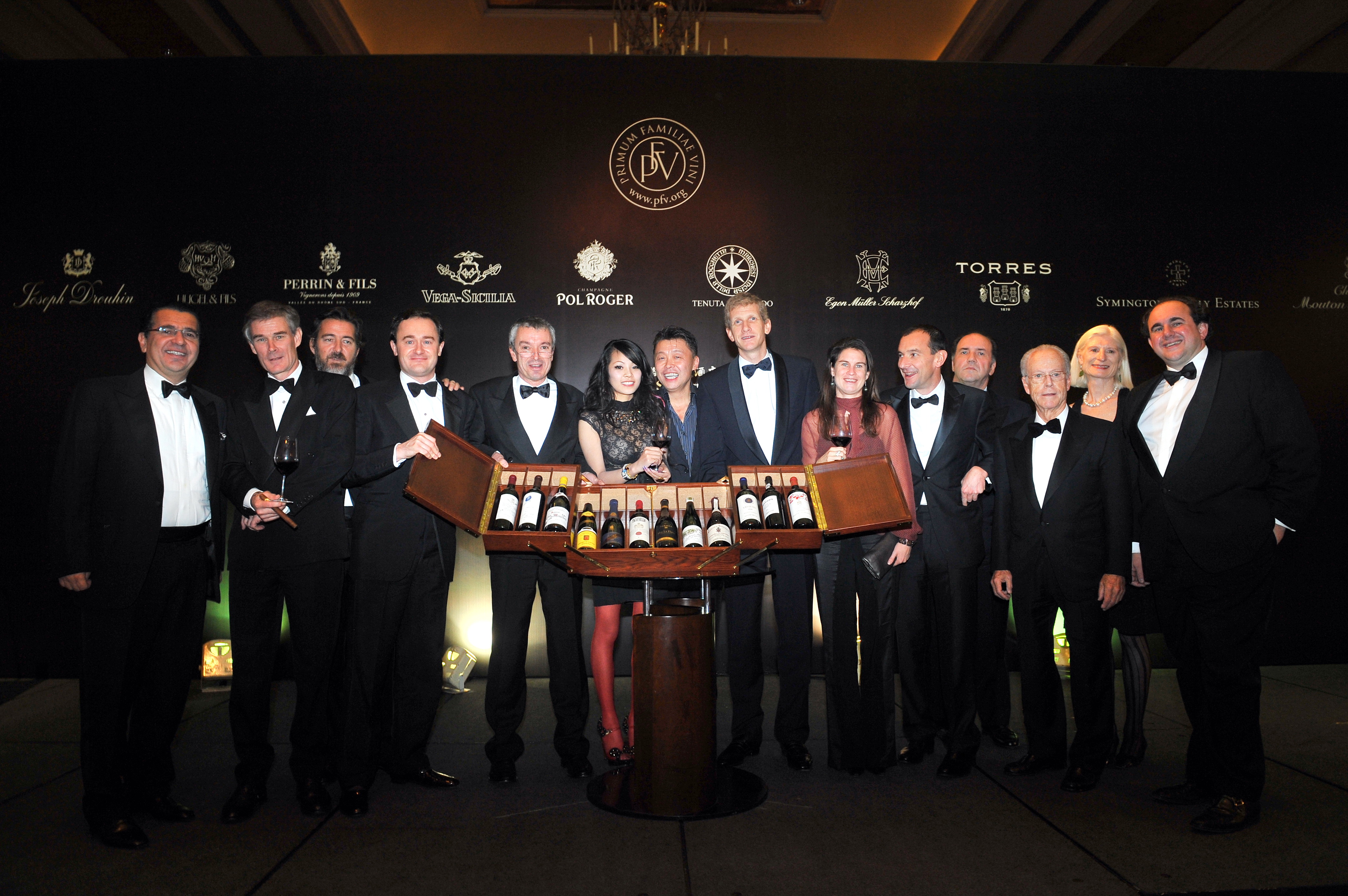
The list of members is astonishing: Pol Roger from Champagne, Château Mouton Rothschild of Bordeaux, Maison Joseph Drouhin from Burgundy, Hugel et Fils from Alsace (second oldest in the group with 13 generations since 1639), Perrin et Fils from the Rhône Valley, Egon Müller from the Saar, Antinori, the oldest wine family of the list (26 generations) from Tuscany, Tenuta San Guido with their Sassicaia, Miguel Torres and Vega Sicilia from Spain and the Symington Port estates in the Douro.
A member of the Royal families of European wines at my house? will he be a pompous “prince” who is going to look down on us PLEBS (in ancient Rome: despised social class, commoners, low-born, undistinguished…), this guy will dwell for a few hours under my roof? but than, Why not? this is an opportunity and so I readily took the “challenge”, (being told by Judy he is a cool guy, a hippy of sorts, this is where I feel comfortable)
This is going to be a night of food and wine, it has to be special, extraordinary, This guy knows his food and wine, he dined everywhere and drank anything, he has good palate and nose, I can not surprise him, but I will do my best… after all, this is a meal for only 5 diners, (shame I have to work late that day and will have only an hour and a half before the guests arrive).
As it turned to be, it was a night of food, wine, Rock n’ roll, amitié (real friendship) and giving (but thats for later on…)
Planning the menu has to include 2 first dishes cooked on the spot , the main dish will have to be a roast (let the oven do the job for me while I’m busy prepping the first 2 dishes and the theme? Eclectic! things that go well with Alsacian, Hugel wines (which I bought in advance at “Derech Hayaiin“ , of Family Shaked, Hugel representatives in Israel (Importers) and the best chain of fine wine shops around the country (http://www.wineroute.co.il/?tree=english&item=0&theme=he-il.
So I have Gewurtztraminer, Riesling, and Gentil “Hugel”, which as they say: “brings together the suave spicy flavour of Gewürztraminer, the body of Pinot Gris, the finesse of Riesling, the grapiness of Muscat and the refreshing character of Sylvaner”, all the above Hugel wines as my cooking wines, this pulled me to opt for dishes with a touch of the far east, a touch of the middle east (after all that’s where we are, and the guest is coming from a visit to Beirut, prior to his “Holy-Land” visit… all with a delicate french touch.
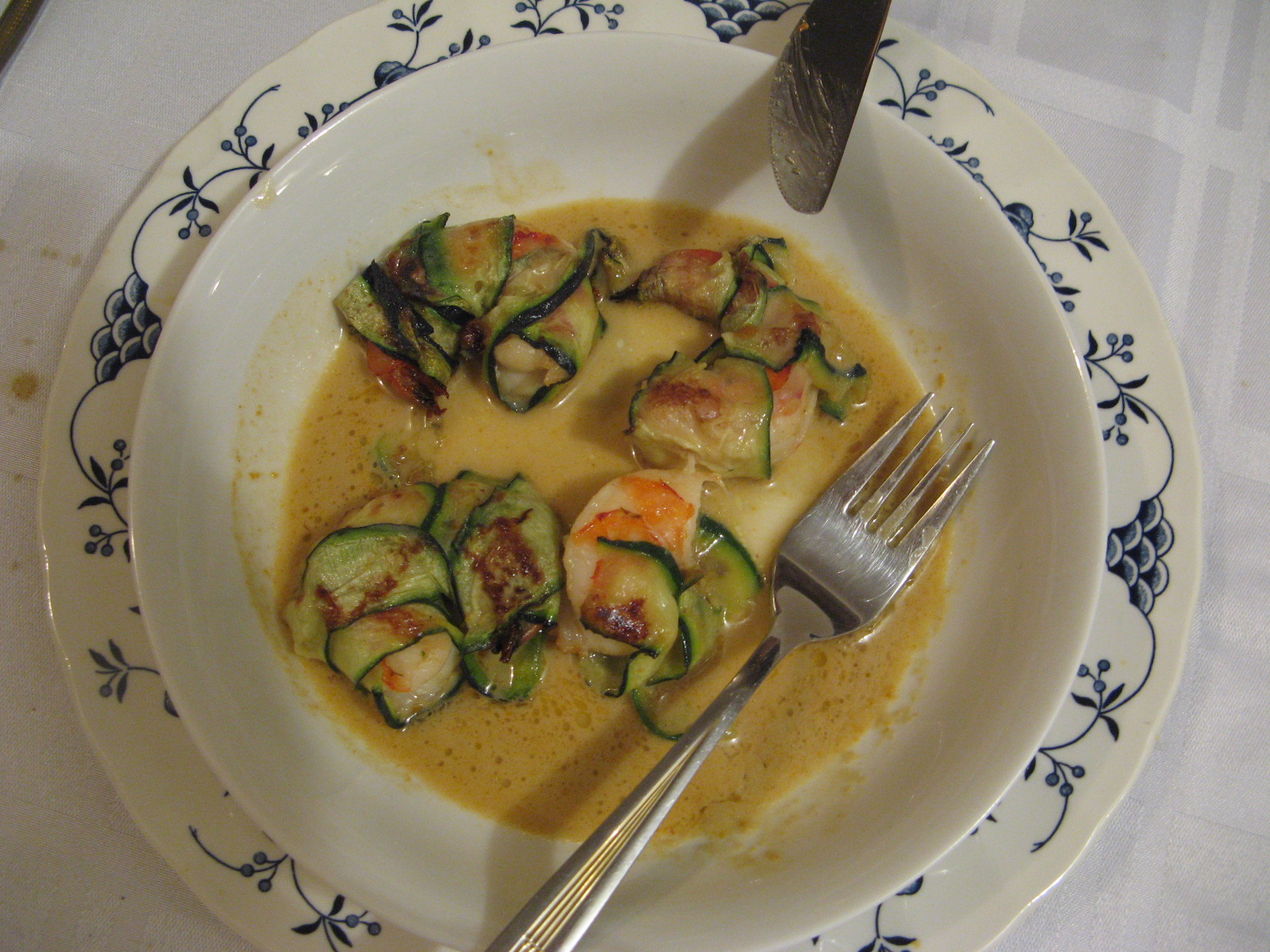 For first course: Giant crystal Shrimps rolled in Zucchini, fried in goose fat, in Champagne and Riesling shrimp sauce. This is a takeoff on Joël Robuchon’s dish with Langoustine in champagne sauce. this sauce is really alluring you could almost drink it on its own with all the shrimp and champagne aromas , sublime!
For first course: Giant crystal Shrimps rolled in Zucchini, fried in goose fat, in Champagne and Riesling shrimp sauce. This is a takeoff on Joël Robuchon’s dish with Langoustine in champagne sauce. this sauce is really alluring you could almost drink it on its own with all the shrimp and champagne aromas , sublime!
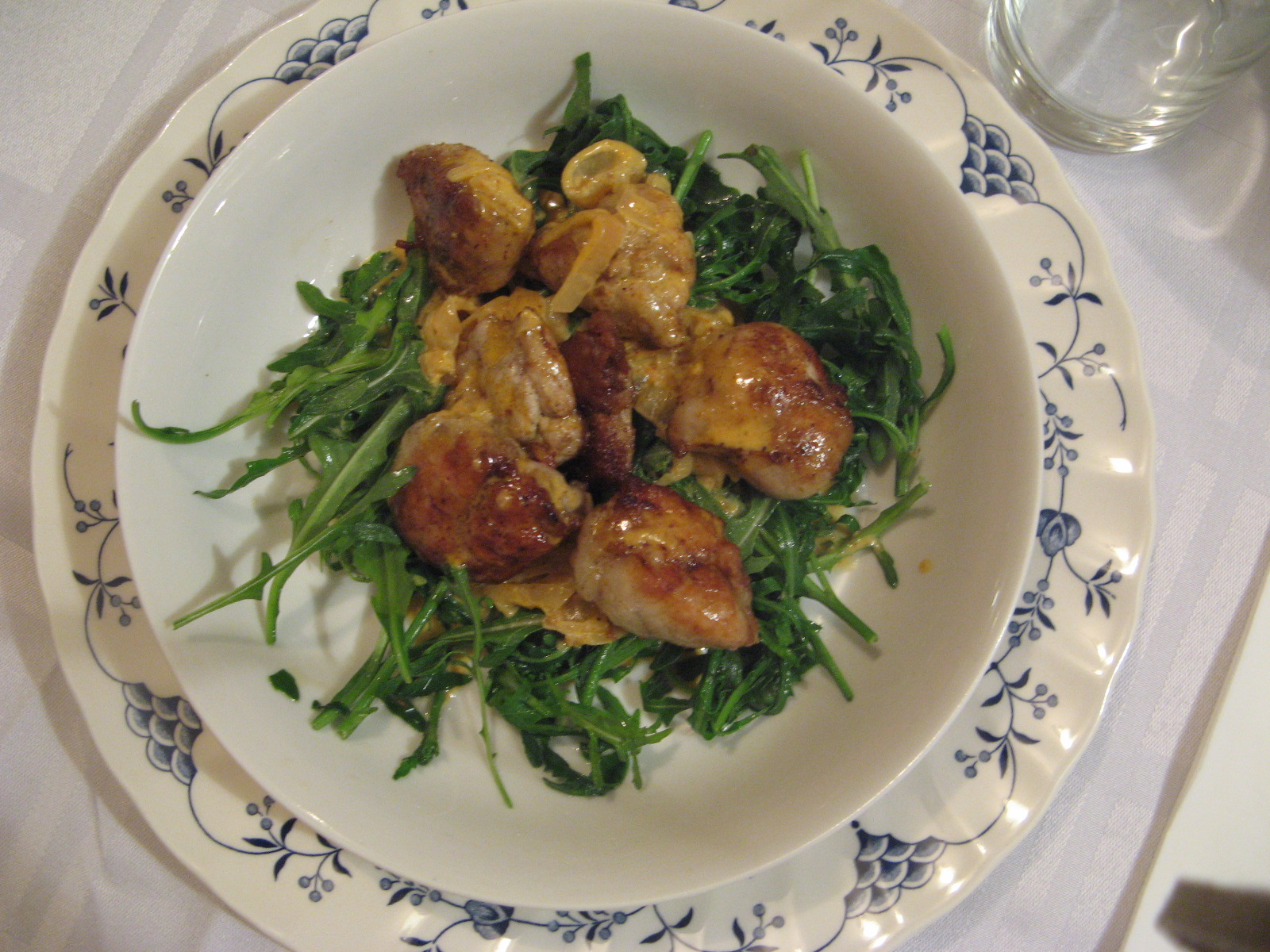 For the second course: I need a south east Asian touch to accompany my second cooking wine the Gewürztraminer, Fried Veal sweetbreads in a light gwurzt curry cream sauce on a bed of blanched wild Rocket. for the blanching I used a bottle of simmering Gentill Hugel wine .
For the second course: I need a south east Asian touch to accompany my second cooking wine the Gewürztraminer, Fried Veal sweetbreads in a light gwurzt curry cream sauce on a bed of blanched wild Rocket. for the blanching I used a bottle of simmering Gentill Hugel wine .
 For the main course : Mediterranean style Roast Leg of Lamb, served with Roasted potatoes, steamed Spinach in Olive oil, White and brown Oven steamed Shimeji Mushrooms (homage to Japan…)
For the main course : Mediterranean style Roast Leg of Lamb, served with Roasted potatoes, steamed Spinach in Olive oil, White and brown Oven steamed Shimeji Mushrooms (homage to Japan…)
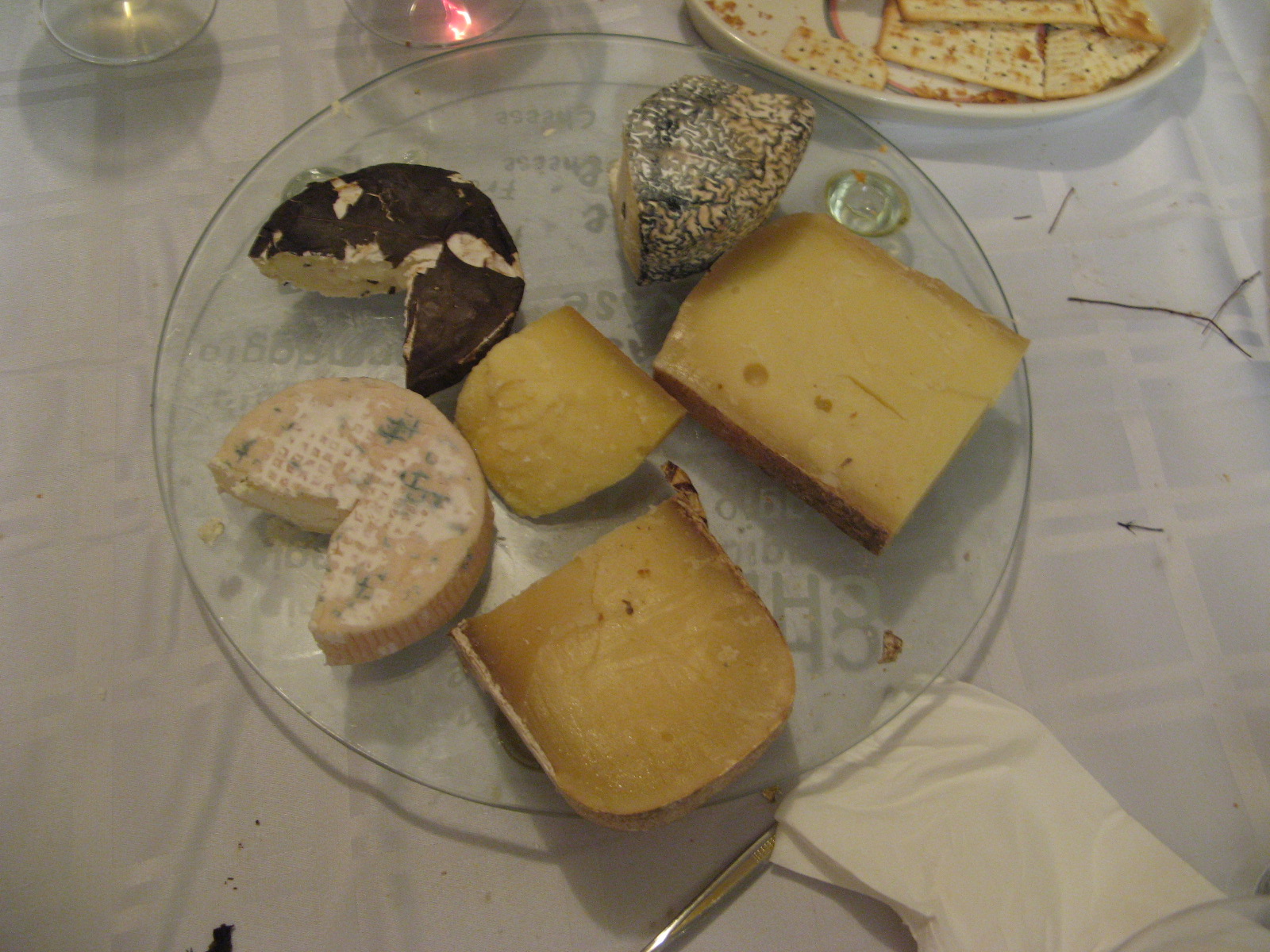
Than, A selection of french and local goats cheeses with green salad.
For dessert: Tart Tatin of Pears and Ginger served with dessert wine which turned to be to amazing 1976 Gewürztraminer Hugel “Sélection de Grains Nobles”, Nectar of the Gods …
 I have just finished rolling my shrimps in “zucchini leaves” , and prepping our sweetbreads : blanch, peel and all… and most of the Mise en scène (after all cooking is a bit like movie making or a theatre production) and Mise en place, that our front door was open and in came my old friends Yair and Judy and a stormy guy in slightly sweaty T shirt (it was a hot day outside), his face lighted the room with joy (almost childish), his hands full with presents, offerings of fine wines and a mystery Pink box the content of which I will reveal later. With a rolling stones song at the background he immediately blended into the music and my greetings met his happiness and good will. A simple guy like me and you, not the aristocratic attitude I dreaded at first.
I have just finished rolling my shrimps in “zucchini leaves” , and prepping our sweetbreads : blanch, peel and all… and most of the Mise en scène (after all cooking is a bit like movie making or a theatre production) and Mise en place, that our front door was open and in came my old friends Yair and Judy and a stormy guy in slightly sweaty T shirt (it was a hot day outside), his face lighted the room with joy (almost childish), his hands full with presents, offerings of fine wines and a mystery Pink box the content of which I will reveal later. With a rolling stones song at the background he immediately blended into the music and my greetings met his happiness and good will. A simple guy like me and you, not the aristocratic attitude I dreaded at first.
I immediately felt (I like this guy) and after a brief introduction we became the oldest best buddies ever…
 The kitchen is partially open plan and the dinner table was laid down, and with no further pause he “demanded” a Champagne Cooler Bucket full of Ice to put the 2004 Louis Roederer Cristal Brut Millesime Champagne, he had in his hand .
The kitchen is partially open plan and the dinner table was laid down, and with no further pause he “demanded” a Champagne Cooler Bucket full of Ice to put the 2004 Louis Roederer Cristal Brut Millesime Champagne, he had in his hand .
Cristal is a magnificent wine of 40% Chardonnay and 60% Pinot Noir, aged for six years!!! on the yeast and a further 8 month in the bottle without yeast. and the vintage 2004, Ai Yai Yai (as Etienne said several times that night…) We impatiently opened the wine after it got to our temperature of taste (not too cold). After the first sniff and sip the Cristal hallmarks are evident: “purity, precision and the unique harmony of flavours associated with the subtle power of our historic vines, located on the finest Champagne Grand Cru terroirs.” – as described by Jean-Baptiste Lécaillon, Roederer’s Cellar Master, an extraordinary champagne on all counts.
This wine has a lot of layered aromatic elegance of white peach, apricot, honeyed citrus blossoms and amazing minerality , grilled hazelnuts and creamy butter texture, very sensual and a great company to our first course, which got hailed around the table
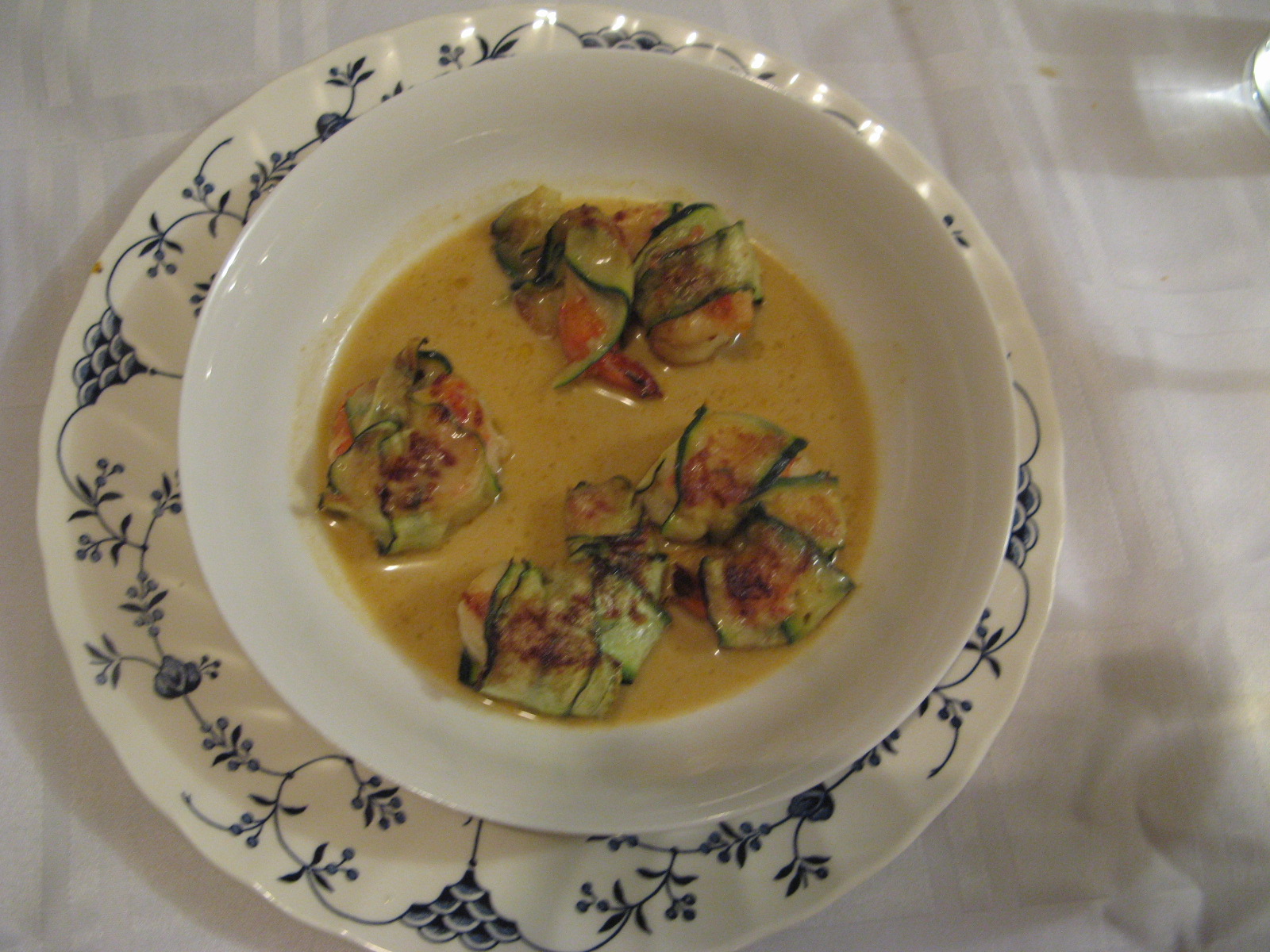
 (Though I know the Cristal did most of the job, raising the dish to a higher level, it went gloriously with our first dish of the evening and in the end Etienne did ask for the remaining sauce to be served to him as a soup, he loved every tiny bit of it and drank it to the last drop, a most amusing moment… as you can see below.
(Though I know the Cristal did most of the job, raising the dish to a higher level, it went gloriously with our first dish of the evening and in the end Etienne did ask for the remaining sauce to be served to him as a soup, he loved every tiny bit of it and drank it to the last drop, a most amusing moment… as you can see below.

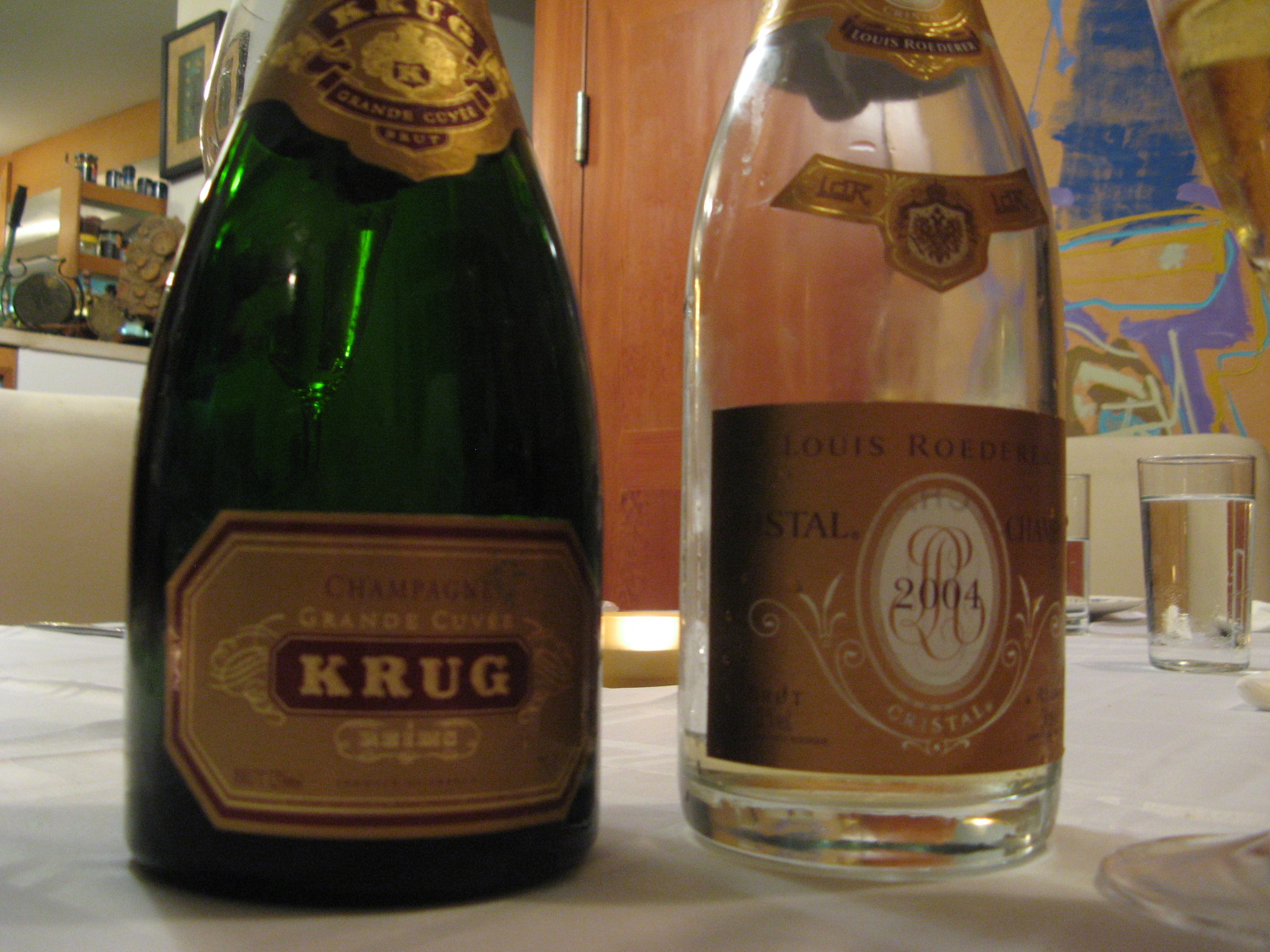 My guests were asked to pass the time as I go prepare the next dish (sweetbreads), but Etienne insisted on a “tour” of my cellar (a small room with a few gems collected over the years, nothing like the cellars he is used to…), still not bad by local standards, I gave him the “Royal tour” and chose a bottle of Krug Grande Cuvée, to keep the champagne bit of the evening going on, which met immediately Etienne’s approval, the Krug Grande Cuvée NV Champagne, sat on ice to be cooled just slightly more, and the primum Vini represenative in the dinning room followed me to the kitchen, noticing my Lacanche stove he said (In his lovely french accent):” There’s one like this one, in the presidents private kitchen at the Élysée Palace” (the official residence of “Le Président de la République Française”), than immediately started to ask questions regarding our next dish, from a knowledgeable point of view, an interested observer willing to help, full of amazement almost like a child , discussing the how and why and the thought behind them. I guess I was a bit distracted and pulled the Arugula out of the “wine steaming” slightly ahead of time, the leaves were still a little too tough but it somehow went well enough with the curry cream sauce and the tender, butter fried sweetbreads,
My guests were asked to pass the time as I go prepare the next dish (sweetbreads), but Etienne insisted on a “tour” of my cellar (a small room with a few gems collected over the years, nothing like the cellars he is used to…), still not bad by local standards, I gave him the “Royal tour” and chose a bottle of Krug Grande Cuvée, to keep the champagne bit of the evening going on, which met immediately Etienne’s approval, the Krug Grande Cuvée NV Champagne, sat on ice to be cooled just slightly more, and the primum Vini represenative in the dinning room followed me to the kitchen, noticing my Lacanche stove he said (In his lovely french accent):” There’s one like this one, in the presidents private kitchen at the Élysée Palace” (the official residence of “Le Président de la République Française”), than immediately started to ask questions regarding our next dish, from a knowledgeable point of view, an interested observer willing to help, full of amazement almost like a child , discussing the how and why and the thought behind them. I guess I was a bit distracted and pulled the Arugula out of the “wine steaming” slightly ahead of time, the leaves were still a little too tough but it somehow went well enough with the curry cream sauce and the tender, butter fried sweetbreads,
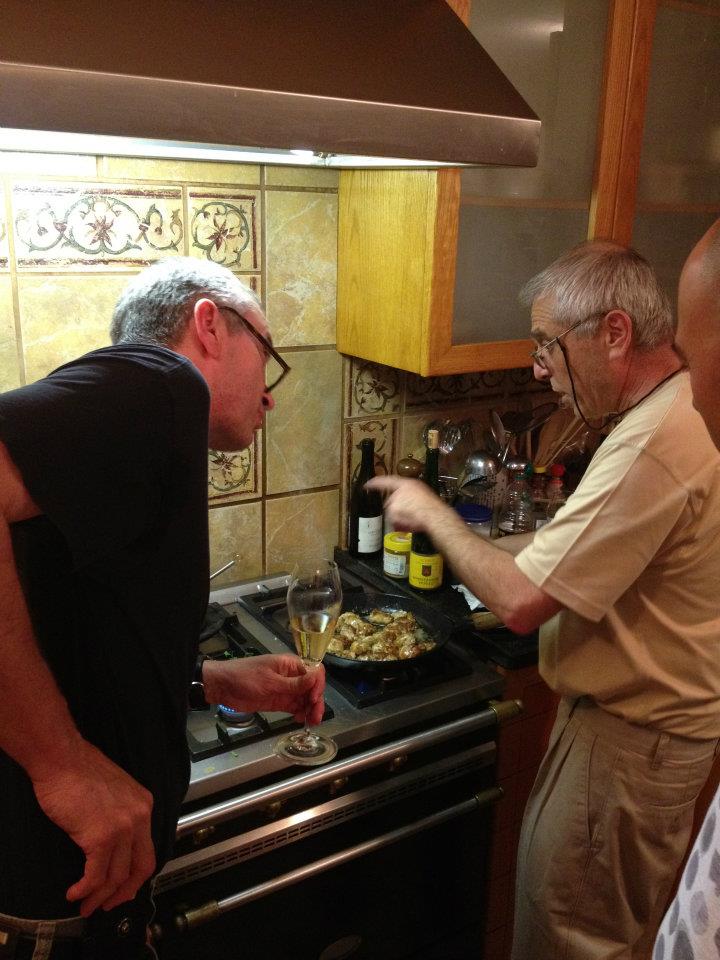
Etienne helped me serve the dishes to the table (such a sweet guy), as we were eating sipping our wonderful Krug Etienne most graciously looked at me and said (again in his sweet french accent) : “are you trying to give french cooking a bad name?” commending my second dish with the utmost compliment (a polite expression of praise or admiration),  by now we were already drinking the powerful Chassagne-Montrachet Les Chenevottes 1er Cru Michel Colin Deleger 1993 , not the best vintage year for this wine, even worse after the two great champagnes but better than anticipated. Although my cellar stores great Bourgogne whites, we kept for the moment with the wines brought by the guests for the occasion. This is a leisurely dinner and we were not going to be deterred by a mediocre Wine here or there, and so we withdrew to the “drawing room” adjacent to the dining table for a smoke and a cheerful chat, while our joint of lamb was resting on a rack waiting to be carved soon.
by now we were already drinking the powerful Chassagne-Montrachet Les Chenevottes 1er Cru Michel Colin Deleger 1993 , not the best vintage year for this wine, even worse after the two great champagnes but better than anticipated. Although my cellar stores great Bourgogne whites, we kept for the moment with the wines brought by the guests for the occasion. This is a leisurely dinner and we were not going to be deterred by a mediocre Wine here or there, and so we withdrew to the “drawing room” adjacent to the dining table for a smoke and a cheerful chat, while our joint of lamb was resting on a rack waiting to be carved soon.
This is turning to be a great fun occasion and we are only half way through, the rest of this meal, the wines, the food, in Part 2 and the promised surprise in the pink box to follow soon…
YOUR WINEGUIDE
New Year’s Eve dinner – 2014
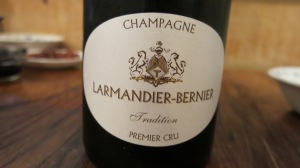 Another year have passed and I got ready for our yearly celebration, this year we had some cancelations and a dinner for 8 is not a difficult task.
Another year have passed and I got ready for our yearly celebration, this year we had some cancelations and a dinner for 8 is not a difficult task.
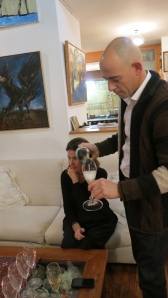 For my own sake and the sake of my regular 3 invitees I had to come up with a menu not too difficult to execute and yet still grand and surprising as a dinner to celebrate the New Year should be.
For my own sake and the sake of my regular 3 invitees I had to come up with a menu not too difficult to execute and yet still grand and surprising as a dinner to celebrate the New Year should be.
The welcome dish required the prep of fresh potato Blinis, to go with the last Caspian Beluga Caviar in my fridge, which I saved for this occasion. A real treat on Crème fraîche with our welcome champagne: the wonderful Larmandier -Bernier Tradition Extra Brut 1er Cru NV. The delicate Caviar on home made Blinis requires a true wine that bubbles, a champagne made with the LOVE, blood sweat and tears of Pierre Larmandier who manages to produce a champagne of this quality every year. It has it all: an elegant citrus fruit beauty, a true Brut. The Brut Tradition (80 percent Chardonnay, 20 percent Pinot Noir) is a premier cru from Vertus, at the southern base of the Cote des Blancs It is extremely dry and very pure, a delicate latticeworkbetween the minerals and citrus zest with a nice hint of yeasts. Or in the words of Jancis Robinson : “Larmandier-Bernier, Tradition Extra Brut Premier Cru NV Champagne: Restrained nose that suggests great delicacy. Real race, spine, and structure. Very grown up champagne”
But I still needed a “surprise” to kick off the dinner which will go well with the sumptuous Champagne, an amuse bouche came in the form of a takeoff on an appetizer I had at Restaurant Story London Bridge in June 2013, there we had a sublime Crispy Cod skin, cod Roe and carrot tips, but cod skin is not readily available round my neck of the woods so I opted for Salmon skin “crackers”, dotted with vongole and home made chipotles mayonnaise served with a Shot glass of hot, Yuzo scented clear vongole stock/liquor. The “crackers” were crispy and their harsh salmon flavour was balanced well with the mayo and the light lemony stock, exactly the way I imagined it, it did take everyone by surprise!
Our first course was Thai Pumpkin coconut cream and shrimps soup Topped with Mint Pea soup and a panko coated shrimp. A totally delightful combination of colours and contrasting texture on the palate of the crunch and cream, the intended touch on the palate was achieved to my utmost satisfaction.
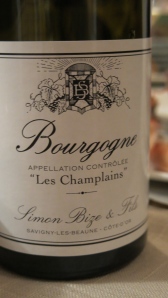 I planned to serve it with Saint Romain T&P Matrot 2007 (as written on the Dinners menu), but!!! with BOTH bottles corckey???, what are the chances this will occur from the same case??? My cellar “offered” 2 bottles of Simon Bize Bourgogne Blanc Les Champlains 2010, with it’s wonderful nose of green apples, with some peaches citrus and acacia and some tropical fruits blossoms was at the end a more suitable wine for this dish with it’s south east Asian touches.
I planned to serve it with Saint Romain T&P Matrot 2007 (as written on the Dinners menu), but!!! with BOTH bottles corckey???, what are the chances this will occur from the same case??? My cellar “offered” 2 bottles of Simon Bize Bourgogne Blanc Les Champlains 2010, with it’s wonderful nose of green apples, with some peaches citrus and acacia and some tropical fruits blossoms was at the end a more suitable wine for this dish with it’s south east Asian touches.
Our Mid course was Risotto ai frutti di mare, a traditional style risotto, made only with shrimps, Langoustinesand Vongole without the shells. The risotto was cooked with shrimp heads and fish stock, and some of the vongole stock in butter white wine, garlic and parsley and a hint of chilly,the other half of the vongole stock was strained than refreshed with lemon and Yuzo and used for drinking with the salmon skin crackers. The Mascarpone gave it the final attractive creamy touch, which makes any risotto so alluring… I could not resist “decorating the dish with Langoustine heads. (tacky me)
This dish went with the creamy still fresh Chassagne Montrachet- Les Caillerets 1er Cru, Domain Morrey Coffinet 2002 with its pear skin and lime scent and minerals on the palate a touch of butter brioche to complement the dish in a nice manner.
For the main course I must admit I planned Breast of duck in cream morilles sauce (Morilles à la Crème) but the duck skin was completely torn off the breasts and could not be served in style, luckily my dedicated butchers Nir & Avi Ofer (of the Delicious 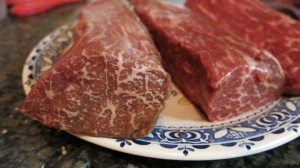 “Delichess butchers” in Tel-Aviv, without a doubt, the best butchers in town…) offered me instead some wonderfully marbled pieces of Wagyu beef (the last bits in the Land of fresh wagyu) which were cut to my specification to make my homage to a dish I had at Zuma London : Seared Wagyu Tataki Black Truffle Ponzu I decided to serve it as a duo one with the Morilles à la Crème the other scented in black truffle oil, and diced
“Delichess butchers” in Tel-Aviv, without a doubt, the best butchers in town…) offered me instead some wonderfully marbled pieces of Wagyu beef (the last bits in the Land of fresh wagyu) which were cut to my specification to make my homage to a dish I had at Zuma London : Seared Wagyu Tataki Black Truffle Ponzu I decided to serve it as a duo one with the Morilles à la Crème the other scented in black truffle oil, and diced 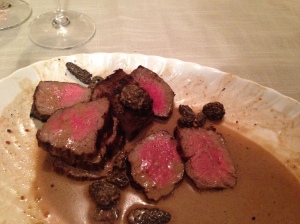 black truffles in a Japanese chilly salad oil, decorated with coluored seaweeds. The duo was served with Joel Robuchon style potato puree and a green salad of Salnova lettuce and Figs.
black truffles in a Japanese chilly salad oil, decorated with coluored seaweeds. The duo was served with Joel Robuchon style potato puree and a green salad of Salnova lettuce and Figs.
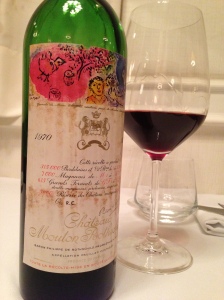 To celebrate the new year and ourselves, our main dish was served with the still fresh and deeply fragrant Chateau Mouton Rothschild 1970 , I doubt if I could pick a better wine to match this wonderful Wagyu dish whose success was mainly due to the excellent product (Thanks Nir)
To celebrate the new year and ourselves, our main dish was served with the still fresh and deeply fragrant Chateau Mouton Rothschild 1970 , I doubt if I could pick a better wine to match this wonderful Wagyu dish whose success was mainly due to the excellent product (Thanks Nir)
Now the wine… every time you open a 40+ year old bottle the content is an enigma, will it be drinkable? Will it fulfill the promise of its ability to mature and still reflect the balance of fruit, freshness, secondary and tertiary aromas? Will it go the full monty? To be as grand as intended when served. Well my deciples this one did it was a young 43 years old wine with all the nuances : it had the fruit to keep it fresh some young black fruit not only cooked dried fruits figs, prunes, even dates, those were ample, but well balanced with the soft but still apparent tannins, and with them the full array of sweet spices cloves, cinnamon, coffee, depth of black truffles in a concert of well orchestrated flavours which gave the “concert” a well deserved crescendo. As it is now it will drink well on it’s 50th birthday, and I will report!
For desert we had my sister’s Dana special Cream Caramel (CC) which has become a ‘”tradition” for these dinners especially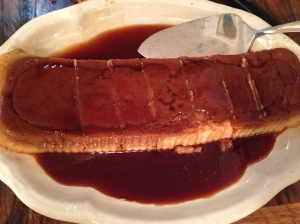 served for Osnat a CC expert, who gave it two thumbs up for the extra burnt touch of the caramel. Served with a 1983 ‘Chateau Suduiraut, Sauternes’ which was a bit of a disappointment, lacking all the great sauternes characters, but did not cloud the joy and enjoyment of the whole meal.
served for Osnat a CC expert, who gave it two thumbs up for the extra burnt touch of the caramel. Served with a 1983 ‘Chateau Suduiraut, Sauternes’ which was a bit of a disappointment, lacking all the great sauternes characters, but did not cloud the joy and enjoyment of the whole meal.
 A very HAPPY NEW YEAR to all, my sous chef Amos, Head sommelier Yair, Varda as best gaffer, Osnat & Nir, Lala and Prof. Yahoo
A very HAPPY NEW YEAR to all, my sous chef Amos, Head sommelier Yair, Varda as best gaffer, Osnat & Nir, Lala and Prof. Yahoo
and to my followers and incidental visitors alike.
YOUR WINEGUIDE
A Perfect Party
 Perfection of any party or anniversary celebration is measured without a doubt by the quality of the invitees, and the products served to celebrate the event.
Perfection of any party or anniversary celebration is measured without a doubt by the quality of the invitees, and the products served to celebrate the event.
We had yet another anniversary, this one, we celebrated in a very “minor” fashion: Just us and one more guest a dear friend of old, 3 people enjoying a perfect company with some food and excellent wine to accompany the occasion.
A celebration always calls for Champagne and we opted for Roederer Cristal 2004 (55% Pinot Noir 45% Chardonnay), the one to suit our “humble” niblets :
Royal Beluga Caviar on home made Potato Blinis,
Best of Scottish smoked salmon and Crème fraîche,
Pâté de Foie Gras with Black truffles, Fresh figs and homemade fig confiture and butter Brioche.
All of these, took us into a realm of delight and joy which could only be described by the ease and delight in which they were consumed.
 As the large black eggs of the Huso Huso (the scientific name for the Beluga or European Sturgeon), kept popping between our teeth were washed down by the
As the large black eggs of the Huso Huso (the scientific name for the Beluga or European Sturgeon), kept popping between our teeth were washed down by the  wonderful yet slightly young Cristal , with its light straw golden colour and delicate small bubbles with a whiff of freshly baked bread nose, and elegant perfumes of citrus, and fresh red apple. On the palate, high acidity intensifying the fresh fruits and a red grapefruit finish, Elegant fresh but young. We spoiled ourselves with three of the world’s most prized and exclusive luxury foods and wine.
wonderful yet slightly young Cristal , with its light straw golden colour and delicate small bubbles with a whiff of freshly baked bread nose, and elegant perfumes of citrus, and fresh red apple. On the palate, high acidity intensifying the fresh fruits and a red grapefruit finish, Elegant fresh but young. We spoiled ourselves with three of the world’s most prized and exclusive luxury foods and wine.
The niblets went quite a long way, much longer than the one bottle of Champagne and so we opted to leave aside some of the champagne for a final toast and 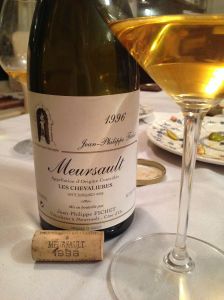 opened a more mature white Bourgogne, a Meursault Les Chevalieres Jean–Philippe Fichet 1996, with it’s golden colour of deep yellow center with clear rims and complex nose, still lively with its distinctive minerally and notes of herbs and marmalade of citrus. At it’s 17th year of age it was still fresh with now with a complexity that evolved with time. The palate was fruity with flavours of tangerine, apricots and apples touches and a lovely nutty, touches with lemon marmalade and pear touches as well as herby vegetable characters. A really beautiful nose, Very intense and roasted nuts flavours with buttery toast notes. The high intensity nose offered rich almost tropical fruit scent.
opened a more mature white Bourgogne, a Meursault Les Chevalieres Jean–Philippe Fichet 1996, with it’s golden colour of deep yellow center with clear rims and complex nose, still lively with its distinctive minerally and notes of herbs and marmalade of citrus. At it’s 17th year of age it was still fresh with now with a complexity that evolved with time. The palate was fruity with flavours of tangerine, apricots and apples touches and a lovely nutty, touches with lemon marmalade and pear touches as well as herby vegetable characters. A really beautiful nose, Very intense and roasted nuts flavours with buttery toast notes. The high intensity nose offered rich almost tropical fruit scent.
As expected, the wine was quite ripe and rich in the mouth. However, it also showed nice acidity to keep it in balance and provide length. It had good complexity showing an evolution of almost a fine red wine in its complexity and structure.
Genuine caviar refers to Beluga (Huso huso), Osetra—with two Osetra varieties, Russian (Acipenser gueldenstaedtii) and Persian Osetra (Acipenser persicus)—and Sevruga (Acipenser slellatus). All three types of sturgeon originate in the Caspian Sea. (from Wikipedia)
The Caspian Sea’s Beluga sturgeon lives predominantly in the wild and only a small number can be caught from the Sea annually, making it an extremely rare product. (and that is exactly what was served to the joy of all present. (BTW some delicacies should be served and shared only within a small group of consumers 3 is perfect!!) …and that refers to our Caviar and the Champagne.
We finished the Party eating the “left overs” of our niblets with eggs and coffee for breakfast the next morning. Delightful!!!
Real Potato Blinis recipe: (from Chef Israel Aharoni)
2 Large potatos cooked and smoothly pureed
3 eggs
1 cup (200grs) self raising flour
3-4 spoons of (sweet) whipping cream
salt and freshly ground pepper
Butter for frying
Puree the potatos with some of the cream until smooth, add the rest of cream, flour, eggs, salt pepper and nutmeg to reach a smooth mixture if too thick add a bit of cream (it should resemble a pancake mix), butter your frying pan well make small rings 8cm diameter, fry on both sides till golden with brown spots, serve warm.
Fiori di Zucca – Zucchini Flowers from seed to plate
The Orange crowns of courgettes
…and the pleasures of one of the most delicate of Italian dishes: Fiori di Zucca Friti.
What happens if you feel like serving stuffed Zucchini Flowers for you guests (My daughter Daphne and Udi), arriving for a visit from the UK to Tel-Aviv? and zucchini flowers are hard to impossible to get by? Here in the Mid East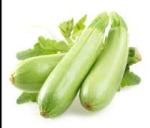 most zucchinis are of the Lebanese summer squash type (Kusa in Arabic) which are often lighter green or even white, and are sold fully matured with no flower in sight, not as baby courgettes or courgette flowers.
most zucchinis are of the Lebanese summer squash type (Kusa in Arabic) which are often lighter green or even white, and are sold fully matured with no flower in sight, not as baby courgettes or courgette flowers.
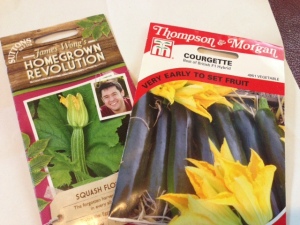 Well I guess you have to start at the local nursery, buy a bag of courgette seeds. These come in a large variety, and since I am not in Italy where these are sold in the market (in season, April – June) I have to go for the fastest growing period 2-3 weeks from sawing the seed till the huge Male flowers (mainly) grow with all their Orangey Yellow regal glow, so attractive to look at and large enough to stuff with ease with any stuffing of your choice, than fried in light tempura style batter and Bob’s your Uncle… (Bob’s your uncle’ is an exclamation that is used when ‘everything is working according to plan…’ with simple means of getting a successful result after following all instructions – English slang)
Well I guess you have to start at the local nursery, buy a bag of courgette seeds. These come in a large variety, and since I am not in Italy where these are sold in the market (in season, April – June) I have to go for the fastest growing period 2-3 weeks from sawing the seed till the huge Male flowers (mainly) grow with all their Orangey Yellow regal glow, so attractive to look at and large enough to stuff with ease with any stuffing of your choice, than fried in light tempura style batter and Bob’s your Uncle… (Bob’s your uncle’ is an exclamation that is used when ‘everything is working according to plan…’ with simple means of getting a successful result after following all instructions – English slang)
So at the nursery I chose The Best of British F1 Hybrid, which has the largest male flowers (easier to stuff) and fast to mature to their flowering state.Other variety to contemplate is Courgette Nano Verde di Milano (High yielding squash Flowers seeds).
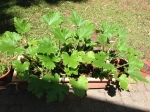
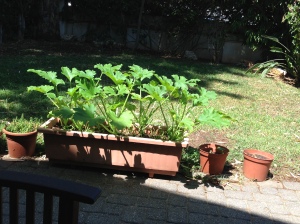
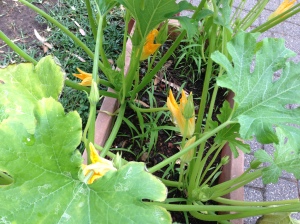 So…Three weeks prior to the meal I saw the seeds in a small sawing pot and than move them into an outdoor large pot, where thereafter they seem to be growing by the minute (rather than the day) you could almost hear them growing into the summer sun and soon enough after two and a half weeks flower stems of green orange and yellow started to sprout, what a delightful sight… So bright yellow with a hue of dark orange, zucchini flowers are so alluring to look at, that you get your cooking ideas just as you look at them.
So…Three weeks prior to the meal I saw the seeds in a small sawing pot and than move them into an outdoor large pot, where thereafter they seem to be growing by the minute (rather than the day) you could almost hear them growing into the summer sun and soon enough after two and a half weeks flower stems of green orange and yellow started to sprout, what a delightful sight… So bright yellow with a hue of dark orange, zucchini flowers are so alluring to look at, that you get your cooking ideas just as you look at them.
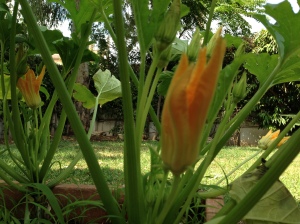 I did not expect all the 11 seeds to sprout or to get so many flowers off each plant, but there you go, all sprouted on time and yielded an enormous amount of flowers daily, for several weeks, which lasted us for, quit a few meals, Heaven!!!
I did not expect all the 11 seeds to sprout or to get so many flowers off each plant, but there you go, all sprouted on time and yielded an enormous amount of flowers daily, for several weeks, which lasted us for, quit a few meals, Heaven!!!
Growing Guide (from the Sutton directions on the pack)
Soil preparation: Zucchini likes well-drained, fertile soil that’s been amended with lots of compost, give your plants a lot of room to spread out and grow. Plant them well apart in rows. (That I did not do)
Planting: Plant seed outdoors when the soil temperature has reached 15°C (60°F), not to worry we are in the Middle East the average outside temperature is around 30°C and over.
Watering: Zucchini like consistently moist soil. To prevent problems with disease, always water from below.
Fiori di Zucca are irresistible when you shop at farmer’s markets around Italy. My favorite way is to deep-fry them stuffed with goat cheese stuffing in a very light beer batter.
Choose freshly flowers picked early in the morning (these ones are tightly closed and bug bug-free). Do not rinse them and let them open with their stems in a water pot like any ordinary flowers if the petals do not spread out separate the petals gently with your finger. Male flowers only have a stems, no squash attached, female flowers with baby zucchini attached are delicious as the baby zucchini need very little cooking to become tender and 4 minutes frying is just right.
If you store them for a later time Zucchini flowers should be refrigerated and tightly sealed, they will keep as fresh for about 24 hours.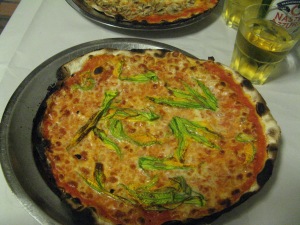
One of the pleasures of summer in Italy are fried stuffed zucchini flowers, thin, crisp fiori stuffed with melted Mozzarella cheese sometimes “spiced” with anchovies or various cheeses, or spread over a pizza.
Always use the blossoms as soon as possible after picking, as they will start to wilt after a day.
The Beer Batter:
1 egg wisked
some flour to thicken the batter
salt to taste
3-4 table spoon of beer to achieve consistency (light)
Whisk a bit of flour with one egg until thick, than add beer slowly (it foams at first, and dilutes the batter fairly quickly so add flour if needed to thicken the batter) to a consistency of light cream. Dip the flowers in the batter, give them a twirl to get rid of any excess batter, and deep fry them in hot oil constantly turning until they turn golden about two to four minutes.
The stuffing:
The aim is to achieve a solid thick enough stuffing that can be rolled to small sausage (right photo)
Grated left over dry goats cheeses
1 ball of fresh buffalo mozzarella cheese cut to small cubes
2 spoons of fresh goats cheese
1 egg
freshly cut oregano or thyme
Anchovy fillets, cut into small squares (optional)
20 large Zucchini blossoms
Directions:
In a small bowl, stir together the egg add some 2-3 tablespoons of flour and the salt. Add the beer and whisk just until blended.
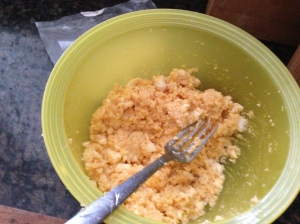 Combine the cheeses; egg and herbs the anchovies to a thick consistency easy to role and stuff each blossom tighten the tip s of the petals together to prevent overflow into the cooking oil.
Combine the cheeses; egg and herbs the anchovies to a thick consistency easy to role and stuff each blossom tighten the tip s of the petals together to prevent overflow into the cooking oil.
In a deep frying pan, pour enough oil to a depth of 5-7cm. heat the oil until a bit of the batter sizzles when dropped in.
4-5 at a time, dip the flowers into the batter dish, carefully turning to coat each flower completely. Lift out and let the excess drip off. Slip the battered flowers into the hot oil and fry until crisp and golden on all sides, about 4 minutes. Transfer the fried blossoms to paper towels to drain and season with salt. Serve immediately.
Fiori di zucca are so delicate and delicious you could / should be “creative” with your stuffing of choice. Stuffing with mozzarella will melt inside the fried blossom and ooze out as you bite on it, what else could you want.
For the same meal I have also prepared:
*”Conserved” white Tuna following an old Italian tradition of preserving cooked fish in brine covered by olive oil, salt and herbs called conservata.
*A salad of roasted Endive, Arugula, white peach, Figs and Roquefort.
*Carpaccio of fresh scallops in Yuzu, Lime, Black Caviar and Nasturtium flowers.
*”Sashimi” of white Tuna in Yuzu, chili oil and wasabi sesame.
Tomato Salad with Tulum cheese and oven roast eggplants with chili and garlic
The wines:
This is the midst of summer
Refreshing Champagne, and light white wines are in Order and so we had:
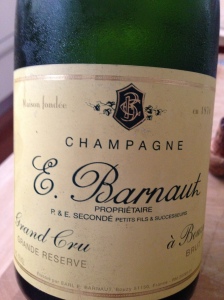 E. Barnaut Grand Reserve, NV Grand cru Champagne (from Bouzy) that was sublime and perfect with the scallops and “Sashimi” a real gem of a perfectly dry but fruity (citrus) champagne, with over 60% Pinot Noir you can actually feel the “traces” of strawberries and cherries on the nose and palate from this little known small champagne house.
E. Barnaut Grand Reserve, NV Grand cru Champagne (from Bouzy) that was sublime and perfect with the scallops and “Sashimi” a real gem of a perfectly dry but fruity (citrus) champagne, with over 60% Pinot Noir you can actually feel the “traces” of strawberries and cherries on the nose and palate from this little known small champagne house. 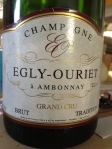
We proceeded with a sip of the wonderful Egly-Ouriet Brut Tradition Grand Cru NV Champagne (from Ambonnay), which was equally refreshing still more complex with glorious golden colour, with nice touches of toasted brioch, roasted hazel nuts, peach and apple peel. Delicate bobbles and well balanced; this is turning into a summer feast…
The 2012 Cloudy Bay which in theory was the perfect wine for the occasion but turned to be on the floral side, with very little sauvignon blanc characteristics and leaning too much to the sweet side lacking the expected 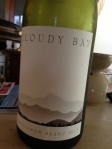 crispiness.
crispiness.
Don’t despair we don’t have to pop into a far away wine shop or even the local corner shop to find a good replacement for this “disappointment” just a few steps down to the basement and into the cellar where we gamble on an eleven years old Sancere: 2002 Domaine Roger Champault  Sancerre Le Clos du Roy, Loire, France. Another go on a Sauvignon Blanc, this time left us surprised, after all this wine is over 10 years of age but the distinctively smoky, gunflint character of Loire Sauvignon Blanc from this area is so well defined here, this is a classic Sancerre palate that is described by Loire locales as: “pierre a fusil” – The aromas and flavour of Gun flint which define this wine (some say the pronounced minerality reminds the taste of the fossil stone, though the spelling should go like “pierre a fossil”, well in any case it had these qualities I guess I am drawn to wine through these oddities of odd flavours, its usual brilliant pale gold turned to deep gold and it felt more ripe than the crisp side, citrus aromas were felt with enough acidity to keep the wine fresh and appealing. The wine is round and by now lacking the sharp edges of youth, yet if felt fresh on the palate with a nice long finish. I guess that this wine was described as: “almost unripe” when tasted (by others at 2003), actually helped it to survive and our “patience” paid off a decade later.
Sancerre Le Clos du Roy, Loire, France. Another go on a Sauvignon Blanc, this time left us surprised, after all this wine is over 10 years of age but the distinctively smoky, gunflint character of Loire Sauvignon Blanc from this area is so well defined here, this is a classic Sancerre palate that is described by Loire locales as: “pierre a fusil” – The aromas and flavour of Gun flint which define this wine (some say the pronounced minerality reminds the taste of the fossil stone, though the spelling should go like “pierre a fossil”, well in any case it had these qualities I guess I am drawn to wine through these oddities of odd flavours, its usual brilliant pale gold turned to deep gold and it felt more ripe than the crisp side, citrus aromas were felt with enough acidity to keep the wine fresh and appealing. The wine is round and by now lacking the sharp edges of youth, yet if felt fresh on the palate with a nice long finish. I guess that this wine was described as: “almost unripe” when tasted (by others at 2003), actually helped it to survive and our “patience” paid off a decade later.
Today is Jewish New Year’s Eve. So Happy New Year to all (of all persuasions)
Your WINEGUIDE
Zuma London and the spirit of Guy Bourdin
An Invitation to ZUMA
My 60th birthday is imminent, (again?, no it’s the same one fron June 11th 2013) & one of the emails reads:
When r u 60?…Can Shelly and I take U, Daphne and Udi to Zuma one eve?
…OK, Table already booked. Kobi.
I must confess I have not been to Zuma since it opened (with a Buzzzzzz) at 2002, it just kept slipping through my restaurant visits in London.
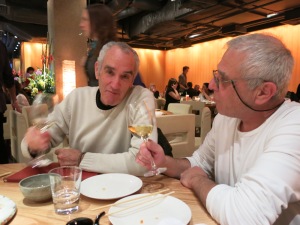 Now Kobi is my legendary “culinary tours” partner at restaurants all over Europe since the late 1980’s, we used to travel all over France in search of the culinary wizards of their times, and found them, tours that left us with everlasting memories. He is a great cook, and an amazing judge of good cooking, and good food, be it haute cuisine or simple street food, a lover of tastes, delicate cooking, a master of light touches that make food
Now Kobi is my legendary “culinary tours” partner at restaurants all over Europe since the late 1980’s, we used to travel all over France in search of the culinary wizards of their times, and found them, tours that left us with everlasting memories. He is a great cook, and an amazing judge of good cooking, and good food, be it haute cuisine or simple street food, a lover of tastes, delicate cooking, a master of light touches that make food 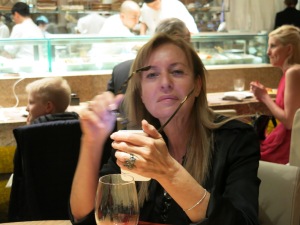 great. (I must say I have learned a lot from him regarding approach to cooking). Shelly his wife (on the other hand), she is a great friend of mine and the true celeb of our group tonight. She is the “teacher /mentor & right hand” of the talented and shy Alber Elbaz, the chief fashion designer of the house of Lanvin, we are talking the top of Haute Couture. (Have a look at Alber Elbaz on truth and fashion Video) it is a fascinating piece on anything but fashion on: http://www.youtube.com/watch?v=y5BUFFpZC5s ) (I like this guy).
great. (I must say I have learned a lot from him regarding approach to cooking). Shelly his wife (on the other hand), she is a great friend of mine and the true celeb of our group tonight. She is the “teacher /mentor & right hand” of the talented and shy Alber Elbaz, the chief fashion designer of the house of Lanvin, we are talking the top of Haute Couture. (Have a look at Alber Elbaz on truth and fashion Video) it is a fascinating piece on anything but fashion on: http://www.youtube.com/watch?v=y5BUFFpZC5s ) (I like this guy).
Elbaz studied fashion at Shenkar College (Ramat Gan) near Tel-Aviv. His teacher was Shelly Verthine, who remained Elbaz’s close friend and creative collaborator. “Shelly was my teacher and is still my teacher,” he says of shelly who remains an integral to his work and is often seen by his side. “The mythological teacher who brings things out of you”
Shelly is also the Author of several top notch fashion books / Albums 
Alber Elbaz, Lanvin– by Shelly Verthime and Pascal Dangin (2012)
Guy Bourdin– by Charlotte Cotton, Shelly Verthime and Collectif (2004)
Guy Bourdin: In Between– by Shelly Verthime and Charlie Scheips (2010)
by Nicolle Meyer and Shelly Verthime (2006), check them out they are fascinating. She is also the curator of the Guy Bourdin V&A exhibition and since then in many major museums all over the world, as I said a real celeb! A video of the 2012 show can be seen at : http://www.youtube.com/watch?v=b0SFLvsYULs
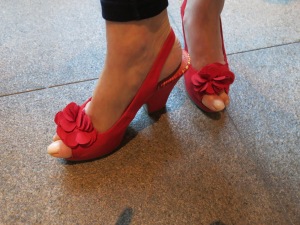 But she is shy, always away from the limelight, I once asked her how come she is always wearing simple plain clothes with all the Haute Couture availabilities around her and so she honoured me with an “appearance” for my birthday…
But she is shy, always away from the limelight, I once asked her how come she is always wearing simple plain clothes with all the Haute Couture availabilities around her and so she honoured me with an “appearance” for my birthday…
As planned we all meet at Zuma as arranged, for my last night of fun Birthday weekend in London, my Home away from Home.
Around 11 years ago a German chef – Chef Rainer Becker, and his Indian business partner opened a super trendy & Modern Japanese restaurant – Zuma. Rainer Becker spent six years in Tokyo where he studied the secrets of Japanese cuisine. Was he in search of the secrets of Japanese cuisine? or its place in Japanese culture maybe? what I would call “The Tao of Japanese cuisine” (道– Dô. or the term Tao means “The Way”, “path” or “principle”). Did he find Enlightenment? Or rather the principles that fuse the esthetics and basic principles of Japanese cuisine with modern western culinary demands, a “needs” for Japanese food with a modern twist to fit contemporary tastes of modern restaurant goers. (As a matter of fact Zuma is now established as a global brand, with openings in Hong Kong, Dubai & Istanbul).
Zuma is about fashion, see and be seen, glamour, and celebrity, but above all it is committed to top notch cooking which they call: contemporary  Japanese food. Zuma of London’s Knightsbridge, offers something different, a sophisticated twist on the traditional Japanese izakaya tradition of informal eating and drinking.
Japanese food. Zuma of London’s Knightsbridge, offers something different, a sophisticated twist on the traditional Japanese izakaya tradition of informal eating and drinking.
Traditionally Izakaya (居酒屋) is a type of Japanese drinking establishment, which also serves food to accompany the drinks. A places for after-work drinking, very much like a Spanish Tapas Bar. Here at Zuma they claim that: “The ethos behind zuma is to deliver an authentic flavour of the east while respecting the traditions of the past”
Indeed the menu presents the diner with a wide variety of traditional Japanese products, condiments and cooking methods all with the addition of some European additions like black truffles (in many of the dishes) and other “borrowed” trendy ingredients make up an alluring menu (the kind you want to say: ”one of each please”.
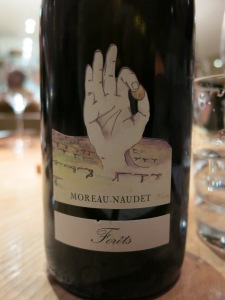 We ordered our wine although the Sake list looks impressive. (my understanding is limited on the Sake front, so I aimed wine wise at the general taste of the guests around the table and came up with a winner:
We ordered our wine although the Sake list looks impressive. (my understanding is limited on the Sake front, so I aimed wine wise at the general taste of the guests around the table and came up with a winner:
Moreau-Naudet, Forets, Chablis Premier Cru, 2010, (at £69 one of the best “deal” of the whites wine list)
This is a fruity, voluptuous wine with abundant citrus notes of lemon, lemon rind, sea salt, (that go well with the ample usage of Yuzu and sea weeds in Zuma’s dishes), a touch of floral scent of wild flowers and wet chalk touch. It’s beauty is in the balance between all the flavour elements. It comes from a small lot within the Montmains vineyard, which Stéphane calls: “…one of the greatest terroirs of Chablis.” Stéphane Moreau is though young is a very experienced winemaker and the wine reflects his deep understanding of Chablis winemaking expressing his new ideas into the final product.
The wine is available at https://www.justerinis.com/fine-wines/wine-details/burgundy/domaine-moreau-naudet/chablis-la-forest-1er-cru-2010-20498 buy it for £165.00 (for a case of 12 bottles (if you are at the UK, and make it your summer wine)
We started with the most amazing fresh, smooth and silky Home made tofu served chilled with condiments, not only it is beautiful to look at, but has a great consistency and touch on the palate, personally “spiced” by each of us with a choice of spices laid around the wooden square dish fresh grated ginger, wasabi, sesame and a fruit confiture, perfect!!
Another totally vegetarian dish arrived on the table Seaweed salad apple wafu vinaigrette & toasted pumpkin seeds, delicious and colourful, bring them on…
Than came the Thinly sliced seabass with Yuzu, truffle oil and salmon roe, very delicate, evenly spiced citrus meets the ocean, the truffle oil, quite unsuitable for these delicate touches of flavours.
The assorted Vegetable and The tiger prawn Tampura’s were slightly different in their butter coating and were both oil free crisp and fresh.
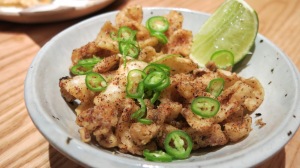 The Crispy fried squid with green chili and lime where prepared to perfection, lightly breaded with a nice rough sandpaper texture on the palate, a
The Crispy fried squid with green chili and lime where prepared to perfection, lightly breaded with a nice rough sandpaper texture on the palate, a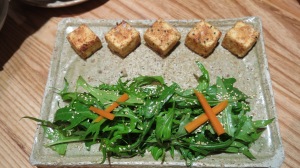 real nibbler.
real nibbler.
The vegeterians around the table were offered the Fried tofu with mizuma, gobo and pickled baby carrots, fried similarly to the calamari.
While I was getting the amazing Freshly seared Wagyu sirloin Tataki with Black truffle ponzu
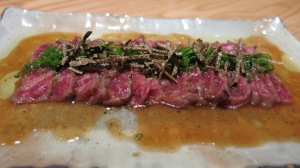
 The Wagyu was perfectly marbled lightly seared on all sides with the center left raw with enough heat to start affecting the fatty “marbles” adorned by a generous amount of thinly sliced “fresh” black truffle which was loosing its scent by now (June) but the ponzu was a perfect dip for the dish adding a lemony zest to the final flavour. Ponzu (ポン酢) is made by simmering mirin, rice vinegar, tuna katsuobushi flakes and seaweed (kombu) over medium heat. The liquid is then cooled, strained to remove the flakes, and finally the juice of Japanese citrus fruits: yuzu, sudachi, daidai, kabosu, or lemon is added.
The Wagyu was perfectly marbled lightly seared on all sides with the center left raw with enough heat to start affecting the fatty “marbles” adorned by a generous amount of thinly sliced “fresh” black truffle which was loosing its scent by now (June) but the ponzu was a perfect dip for the dish adding a lemony zest to the final flavour. Ponzu (ポン酢) is made by simmering mirin, rice vinegar, tuna katsuobushi flakes and seaweed (kombu) over medium heat. The liquid is then cooled, strained to remove the flakes, and finally the juice of Japanese citrus fruits: yuzu, sudachi, daidai, kabosu, or lemon is added.
By now everyone was quite satisfied but I could not resist the amazing Wagyou cut of the day and decided to order the Wagyu beef (sirloin) served with tahhon aioli and chilli daikon ponzu. A real delight straight from the robata grill a real BBQ delicacy, apart from being perfectly prepped, there is no doubt the uncooked produced played a major role in the success of the dish. Excellent!!!
With the eye of a painter and the fre edom of a photographer, Guy Bourdin created images full of fascinating stories, compositions, and colors. Using
edom of a photographer, Guy Bourdin created images full of fascinating stories, compositions, and colors. Using fashion and fashion photography as his vehicle, he explored the realms between the absurd and the sublime, taking cues from the theater and Surrealism. He broke conventions of commercial photography with a relentless perfectionism and sharp humor. Some of these qualities were served to us on the dishes during our meal at Zuma and these are some of the qualities I expect from a meal, my dear friends and family added the extra bits for a great completion of a very FINE supper.
fashion and fashion photography as his vehicle, he explored the realms between the absurd and the sublime, taking cues from the theater and Surrealism. He broke conventions of commercial photography with a relentless perfectionism and sharp humor. Some of these qualities were served to us on the dishes during our meal at Zuma and these are some of the qualities I expect from a meal, my dear friends and family added the extra bits for a great completion of a very FINE supper.
SAYONARA
YOUR WINEGUIDE
Lunch @ Dinner by HB (Part II) – Main dishes
The origins and history of a meal – an Archeological excavation
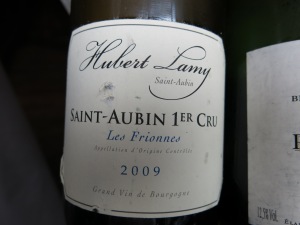 We are sitting for lunch @ Dinner by Heston Blumenthal now already relaxed as we already had our starters, We ordered our champagne and wine for the meal, at the beginning, switching to the Hubert Lamy Saint-Aubin 1er Cru Les Frionnes 2009, after the “opening toast” took place, I like having 2 wines in 2 separate glasses on the table to “perform” my own personal pairing with the dishes served…
We are sitting for lunch @ Dinner by Heston Blumenthal now already relaxed as we already had our starters, We ordered our champagne and wine for the meal, at the beginning, switching to the Hubert Lamy Saint-Aubin 1er Cru Les Frionnes 2009, after the “opening toast” took place, I like having 2 wines in 2 separate glasses on the table to “perform” my own personal pairing with the dishes served…
The Saint-Aubin Les Frionnes 2009 is a very attractive and elegant wine from small lots Les Frionnes on the north side of Rue des Frionnes, just outside the St. Aubin village; (you can “travel” along the vineyard with Google maps street view search for: Rue des Frionnes 21190 Saint-Aubin, France), it seems the grapes are soaking in the sun throughout the day facing the southern slopes. The Lamy family has been working in the vineyards around Saint Aubin since c.1640.
The wine: Clean pale green colour. With notes of lemon zest and green apple peel, white flowers and traces of wet chalk. It has a light touch of wooden presence, it shows subtlety, delicacy and freshness as well as a nice aromatic persistence on the palate. An elegant wine, indeed with fine intensity and excellent freshness of citrus fruits on the long finish, very good balance, harmony and finesse, just right for our meal.
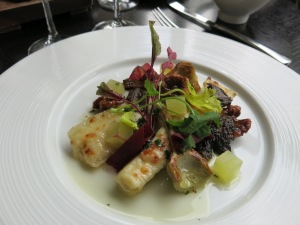 Udi “our” Vegetarian, opted for the – Braised Celery (c.1730) Parmesan, artichoke, walnuts & morels, was rich and tasty, it was perfectly laid down on the plate, I could not resist a tiny bite on the cucumber Jelly which was sublime. (This dish was dug out from the book: The Complete Practical Cook; A new system of the whole Art and Mastery of Cookery, by Charles Carter 1730
Udi “our” Vegetarian, opted for the – Braised Celery (c.1730) Parmesan, artichoke, walnuts & morels, was rich and tasty, it was perfectly laid down on the plate, I could not resist a tiny bite on the cucumber Jelly which was sublime. (This dish was dug out from the book: The Complete Practical Cook; A new system of the whole Art and Mastery of Cookery, by Charles Carter 1730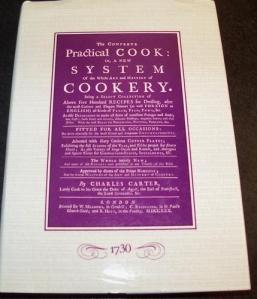 , BTW it is misprinted on the menu as “Charly” Cook, yes C. Carter was a cook for the Duke of Argyle. The Earl of Pontefrac , and the Lord Cornwallis), the book has phrases like: “…and send it up, in its jelly…”, as an instruction to the cook in the kitchen “Downstairs” serving food to the dining TABLE “Upstairs” (You can read another of Carters books free on http://books.google.co.il/books?id=6YIEAAAAYAAJ&pg=PA58#v=onepage&q&f=false
, BTW it is misprinted on the menu as “Charly” Cook, yes C. Carter was a cook for the Duke of Argyle. The Earl of Pontefrac , and the Lord Cornwallis), the book has phrases like: “…and send it up, in its jelly…”, as an instruction to the cook in the kitchen “Downstairs” serving food to the dining TABLE “Upstairs” (You can read another of Carters books free on http://books.google.co.il/books?id=6YIEAAAAYAAJ&pg=PA58#v=onepage&q&f=false
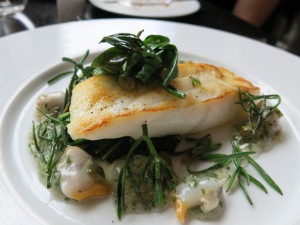 I seems that Daphne our Fish eater, was stuck in (1830), the same year as her starter but… with a dish by a different cook: Maria Eliza Rundell, she ordered the Roast Turbot (c.1830), Leaf chicory & cockle Ketchup. (from the 1830: “A new system of Domestic cookery by M.E. Rundell (A Lady)”, an extremely popular cookbook of its time, mainly in the western colonies. (Later editions were edited and rewritten by Mrs. E Birch.)
I seems that Daphne our Fish eater, was stuck in (1830), the same year as her starter but… with a dish by a different cook: Maria Eliza Rundell, she ordered the Roast Turbot (c.1830), Leaf chicory & cockle Ketchup. (from the 1830: “A new system of Domestic cookery by M.E. Rundell (A Lady)”, an extremely popular cookbook of its time, mainly in the western colonies. (Later editions were edited and rewritten by Mrs. E Birch.)
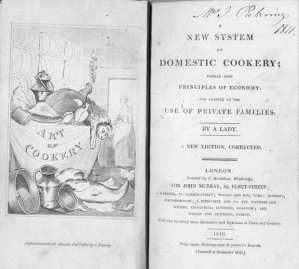
 Ketchup is a late 17th century (around 1690), Chinese mix of pickled fish and spices called : kôe-chiap or kê-chiap (Chinese for: “the brine of pickled fish or shellfish”), from there to Malaysia and by the Brits to the west with the 1830 Mushroom Ketchup by Geo Watkins. The secret of many cooks in Victorian
Ketchup is a late 17th century (around 1690), Chinese mix of pickled fish and spices called : kôe-chiap or kê-chiap (Chinese for: “the brine of pickled fish or shellfish”), from there to Malaysia and by the Brits to the west with the 1830 Mushroom Ketchup by Geo Watkins. The secret of many cooks in Victorian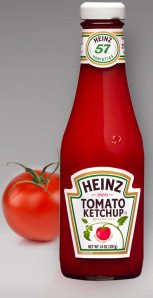 times. It tastes halfway between soy sauce and Worcestershire Sauce and with a light scent and flavour of mushrooms, all the way to Mr. H.J.Heinz very own American tomatoes Ketchup of 1876.
times. It tastes halfway between soy sauce and Worcestershire Sauce and with a light scent and flavour of mushrooms, all the way to Mr. H.J.Heinz very own American tomatoes Ketchup of 1876.
A fine dish with Turbot roasted exactly inside and out and  cockle in their brine, ((ketchup) and Cichorium intybus (chicory)steamed leaves, the cultivated chicory is better known as Belgian Endive (the endives we know are white because the cultivated plant is deprived completely from sunlight (grown in the dark underground or indoors), the green leaves used in this dish are from the wild chicory plant and are more delicate in their bitter taste than the Belgian type and less flavorsome than the brown, ground, dried chicory root used as a coffee substitute during WW2.
cockle in their brine, ((ketchup) and Cichorium intybus (chicory)steamed leaves, the cultivated chicory is better known as Belgian Endive (the endives we know are white because the cultivated plant is deprived completely from sunlight (grown in the dark underground or indoors), the green leaves used in this dish are from the wild chicory plant and are more delicate in their bitter taste than the Belgian type and less flavorsome than the brown, ground, dried chicory root used as a coffee substitute during WW2.
Spike Ordered the Powdered Duck Breast (c.1670) Smoked confit fennel & umbles, a reconstruction of a recipe by Hannah Woolley from The Queene-like closet or rich cabinet  1670-1672. The book was intended for Downstairs staff in stately homes, but does not really include any recipe even close to served dish, maybe the spirit of Ms. Woolley is there, and gave our team of chef inspiration that should do:
1670-1672. The book was intended for Downstairs staff in stately homes, but does not really include any recipe even close to served dish, maybe the spirit of Ms. Woolley is there, and gave our team of chef inspiration that should do:
Ladies, I do here present you (yet), that which sure will well content
A Queen-like Closet rich and brave, (Such) not many Ladies have:
Or Cabinet, in which doth set, Jems richer than in Karkanet;
(They) only Eies and Fancies please, these keep your Bodies in good ease;
They please the Taste, also the Eye; would I might be a stander by:
Yet rather I would wish to eat, since ’bout them I my Brains do beat:
And ’tis but reason you may say, if that I come within your way;
I sit here sad while you are merry, eating Dainties, drinking Perry;
But I’m content you should so feed, so I may have to serve my deed.
Hannah Wolley. (1670)
Yet again, unknowingly Lisa and I ordered the same dish: Spiced Pigeon (c.1780) Ale and Artichokes.
Neck of the woods (c.1555), Neck” had been used in English since around 1555 to describe a narrow strip of land, usually surrounded by water, based on its resemblance to the neck of an animal. But the Americans were the first to apply “neck” to a narrow stand of  woods, well in my neck of the woods pigeons are hard to get and I am a “sucker” for pigeons. Historically the practice of domesticating pigeon as livestock most likely came from the Middle East (my neck of the woods), squabs or pigeons have been consumed in the Middle East for centuries since around 350BC Hellenistic Period, in Ancient Egypt, Rome and then Medieval Europe. Doves are described as food in the Bible and were eaten by the Hebrews (that’s my guys…), still it is
woods, well in my neck of the woods pigeons are hard to get and I am a “sucker” for pigeons. Historically the practice of domesticating pigeon as livestock most likely came from the Middle East (my neck of the woods), squabs or pigeons have been consumed in the Middle East for centuries since around 350BC Hellenistic Period, in Ancient Egypt, Rome and then Medieval Europe. Doves are described as food in the Bible and were eaten by the Hebrews (that’s my guys…), still it is quite rare to find good size or tasty pigeons round here, even quails the very bird that kept our forefathers from starving in the desert during the exodus of the Hebrews from Egypt to the promised Land of Israel is not available in shops anymore (The market forces of availability and demand brought the few farmers down…)
quite rare to find good size or tasty pigeons round here, even quails the very bird that kept our forefathers from starving in the desert during the exodus of the Hebrews from Egypt to the promised Land of Israel is not available in shops anymore (The market forces of availability and demand brought the few farmers down…)
 Squab is a young domestic pigeon; it formerly applied to all dove and pigeon species, such as the Wood Pigeon, the Mourning Dove, and the now-extinct Passenger Pigeon (not by hunting practices may I add). More recently, squab meat comes almost entirely from domesticated pigeons.
Squab is a young domestic pigeon; it formerly applied to all dove and pigeon species, such as the Wood Pigeon, the Mourning Dove, and the now-extinct Passenger Pigeon (not by hunting practices may I add). More recently, squab meat comes almost entirely from domesticated pigeons.
This recipe presumably comes from The: Lady’s assistant, and complete  system of cookery. By Charlotte Mason (c.1780). Read all about it online @ : http://archive.org/details/ladysassistantfo00masob
system of cookery. By Charlotte Mason (c.1780). Read all about it online @ : http://archive.org/details/ladysassistantfo00masob
This lady (Mason), knows how to cook without a doubt and uses the finest of products to achieve her “creations” she relies upon French cooking tradition and uses the French definition when no English words are at her disposition. The pig looks and tastes so pinky, juicy and fresh due to a process they used initially at the Fat duck using an Enzyme Transglutaminase, this enzyme binds proteins together and shortens the cooking time required thus keeping our Pigeons breast all nice and juicy (in one word succulent). The reduction of Ale and pigeon stock is light and well seasoned (these tend to be slightly over salty most of the times BUT NOT HERE!!! There was a total consensus regarding the quality of the dish.
 Now… the wines we had, you already read about. But I wanted to celebrate my 60th birthday with some “rare” wines I have collected through the years, to be opened on a special occasion, Like the Chateaux Mouton Rothchild 1970 (with the Mark Chagall Label), and a bottle of Anselme Selosse Substance Champagne, obviously I would not bring a wine to a restaurant without permission or a wine which is on their list of course, but when requesting that very permission at DINNER you get reply from the wrong people on the restaurant “Hierarchy”, these officials are bound by “restaurant policy” which would never in my mind get the chef’s or head sommelier approval they say NO (easy), I think that if the right people: HB or Ashley Palmer-Watts or the sommelier in charge they would say yes, after all as they write in their www site the idea of Dinner is: A formal meal, typically one in honour of a person or event.
Now… the wines we had, you already read about. But I wanted to celebrate my 60th birthday with some “rare” wines I have collected through the years, to be opened on a special occasion, Like the Chateaux Mouton Rothchild 1970 (with the Mark Chagall Label), and a bottle of Anselme Selosse Substance Champagne, obviously I would not bring a wine to a restaurant without permission or a wine which is on their list of course, but when requesting that very permission at DINNER you get reply from the wrong people on the restaurant “Hierarchy”, these officials are bound by “restaurant policy” which would never in my mind get the chef’s or head sommelier approval they say NO (easy), I think that if the right people: HB or Ashley Palmer-Watts or the sommelier in charge they would say yes, after all as they write in their www site the idea of Dinner is: A formal meal, typically one in honour of a person or event.
Anyway (eat your heart out cause Lisa got me as a present form herself and Georgia (on my mind) a great wine bottle Chateaux Pavie 1970, somehow me paying a long debt on my side to Lisa was also “paid” in the shape of a Croft 1970 Port and I brought along (just in case the restaurant staff will show us the courtesy of good wishes and allow us to open Just one special bottle from my cellar Chateaux Mouton Rothchild also 1970 (3 great 1970’s on the table (well in a beg by the table on the floor), were left orphaned due to policy driven decisions, and me being too shy to ask), still if you ask me a bad decision but I am not the restaurant’s “policy maker” !!!!!!!! (I doubt if HB is even aware of the situation that even on special occasions with a wine which is NOT on the restaurant LIST which is a very nice and comprehensive wine list, (pity the internet version I was referred to is a short unsatisfactory list compared to the rich and diverse even easy to read list you get on the table), the restaurant stuff came out the losers as well because we always share good rare wine/s with other “understanding palates” (as this is our own personal joy). The wines we brought each other, the presents rouse our young sommelier’s envy, yet did not succumb to the “restaurant policy”…
We added Side dishes: the amazing Mashed potatoes and the fresh Braised lettuce and peas again cooked to perfection JUST RIGHT!
 Chef Ashley Palmer-Watts, likes to cook and knows the A-Z of cooking and easily masters a kitchen of this quality but I was left with a feeling that he is “afraid” (maybe by choice), to cross the boundaries of tailored “Haute cuisine” cooking into the realm of FUN. I guess being a “hotel Restaurant” or “Restaurant in a Hotel” has an effect not only on the envelope but also on the content of the Restaurant as a whole itself. On paper the idea to excavate ancient recipes that go as far back as the 14th century up to the beginning of the 20th century, is not only a great idea but shows a sincere and deep interest in food which appeals to me. When one cooks a lot, he stops getting interested in the recipe as an instruction guide to and tries to get to the idea behind the recipes, the other aspects of food such as history, philosophy, sociology, and get into the realm of cookery as ART.
Chef Ashley Palmer-Watts, likes to cook and knows the A-Z of cooking and easily masters a kitchen of this quality but I was left with a feeling that he is “afraid” (maybe by choice), to cross the boundaries of tailored “Haute cuisine” cooking into the realm of FUN. I guess being a “hotel Restaurant” or “Restaurant in a Hotel” has an effect not only on the envelope but also on the content of the Restaurant as a whole itself. On paper the idea to excavate ancient recipes that go as far back as the 14th century up to the beginning of the 20th century, is not only a great idea but shows a sincere and deep interest in food which appeals to me. When one cooks a lot, he stops getting interested in the recipe as an instruction guide to and tries to get to the idea behind the recipes, the other aspects of food such as history, philosophy, sociology, and get into the realm of cookery as ART.
We sank in to the remaining morsels of food in each other’s plates watching the cavalry guard heading back to the stables enjoying each others company while waiting to our deserts on the next post.
Dinner by Heston Blumenthal
66 Knightsbridge, London, SW1X 7LA
Phone: 0207.201.3833
(…To be concluded…)
YOUR WINEGUIDE
Lunch @ Dinner by HB (Part I)
The word Dinner comes from 13th century French word for breakfast, but in Britain it has always been used for the main meal of the day. In medieval times, this meal occurred in the middle of the day and was followed by a much lighter supper before bedtime. Over the centuries, it has got later and later and now means the evening meal. Although in some parts of Britain it still means Lunch! (From the menu wrapper at Dinner)
Well, those of you walking the streets of London, or the ones who visited by chance, my Facebook pages, have already noticed the amazing gesture the Lord Mayor of London Boris Johnson, prepared for me. Banners Celebrating 60 : 1953-2013 have been spread all over town commemorating my 60th birthday which I celebrated a few days ago (on June 11th).I must admit, I was taken by surprise; the city of London “enlisted” all its resources for such a personal occasion (as big as it may be…). Still I can’t really complain and push this show of recognition aside. After all ,I have a few minor contribution throughout the years for this great city of London with: endless paid parking tickets, direct and indirect taxes, reducing CO2 emission to name but a few), still I must admit it caught me by unprepared… Thank you, the Right Honourable Boris Johnson.

 My daughter Daphne honoured me even more by getting us tickets for Mark Knopfler Gig (Privateering 2013 Tour) at the Royal Albert Hall on June 1st (The Hall was booked in advance for the 11th) and so, to make a complete celebration of the day I booked Lunch @
My daughter Daphne honoured me even more by getting us tickets for Mark Knopfler Gig (Privateering 2013 Tour) at the Royal Albert Hall on June 1st (The Hall was booked in advance for the 11th) and so, to make a complete celebration of the day I booked Lunch @  Dinner by Heston Blumenthal (Mandarin Oriental Hyde Park, 66 Knightsbridge, London SW1), present were people I love friends and family, Daphne & Udi, Lisa & Spike and moi your humble WINEGUIDE.
Dinner by Heston Blumenthal (Mandarin Oriental Hyde Park, 66 Knightsbridge, London SW1), present were people I love friends and family, Daphne & Udi, Lisa & Spike and moi your humble WINEGUIDE.
Now… one of my most exciting and fun visits, to a restaurant in the last 2 years was without a doubt, my lunch with Spike at Heston Blumenthal’s the FAT DUCK (as written in my Post: https://wine4soul.com/2012/05/27/lunch-at-the-fat-duck/ ) so we came with some anticipation…
My guests: Spike Denton apart from being amongst my best friends him and I have been going to Restaurants of sorts for ages now so he is an obvious guest,
my dear friend Lisa Galton one of the most acute tasters I know, a real connoisseur of wine and food, (with a wine collection at her dads house with gems of unsurpassed rarity) a lady of quality, a delight to sit to a meal with, in short my kind of lass.
needless to say my daughter, Daphne and son in law, Udi and “meself“, after all it is my 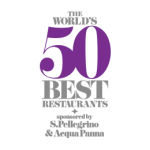 own celebration Innit???
own celebration Innit???
We’re off to the Restaurant that is right there on the first page of The World’s 50 best Restaurants list for 2013, in fact at number seven of the lot… (http://www.theworlds50best.com/list/1-50-winners/ )
Conceived by Heston Blumenthal and his right-hand man Ashley Palmer-Watts, Dinner by Heston Blumenthal excavated ancient recipes that go as far back as the 14th century to the beginning of the 20th century and reintroduces them using contemporary cooking techniques. (we’ll talk about it later…) They say: “Dinner” is not about delicate combinations or table theatrics, but gutsy dishes that will remain at the forefront of your memory bank for years to come.”
As we sat down HRH the queen herself joined the birthday celebration gestures, by sening her cavalry to salute us, sitting at the window looking over the Royal park (Hyde )…
raising our glass of Champagne, I chose the: Paul Dethune, Brut Grand Cru, Ambonnay, NV Champagne, a small grower’s champagne from the Grand Cru village of Ambonnay, we set down to order our starters:
Daphne the pescetarian round our table, goes for the Roast scallops (c.1830) Cucumber ketchup, roast cucumber, bergamot & borage. This roast scallop dish is deconstruction of the elements in the recipe published in the 1826 book The Cook and Housewife’s Manual Mistress by Meg Dodds. Now this is the second time this week cucumber stars as a suitable supporting act to a dish of sweet succulent scallops and it works fine (especially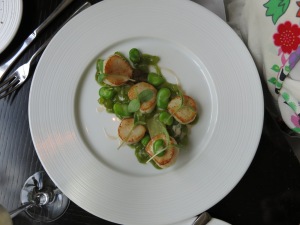 here in England, where green veggies are so prominent (compared to coloured vegetables you can find in hotter countries) I
here in England, where green veggies are so prominent (compared to coloured vegetables you can find in hotter countries) I  must admit it does work well and the green scent of cucumbers compliment the dish well. Add to that Bergamot or wild bergamot, which is of the mint family and Borage (Borago officinalis), also known as a starflower, with edible leaves this annual herb though a native to the Mediterranean region it has naturalized in many other parts of Europe, which grows well in gardens in the UK.
must admit it does work well and the green scent of cucumbers compliment the dish well. Add to that Bergamot or wild bergamot, which is of the mint family and Borage (Borago officinalis), also known as a starflower, with edible leaves this annual herb though a native to the Mediterranean region it has naturalized in many other parts of Europe, which grows well in gardens in the UK.
Udi the Vegetarian, had the Nettle Porridge (c.1660), smoked beetroot garlic parsley & Fennel, a delightful dish even if just to look at…recipe from William Rabisha, The whole Body of Cookery Dissected (1682) . This book was written after the restoration of King Charles II in 1660. William Rabisha was ‘Master Cook’ to many honourable Families and left this important text, a remarkable statement of the art of
beetroot garlic parsley & Fennel, a delightful dish even if just to look at…recipe from William Rabisha, The whole Body of Cookery Dissected (1682) . This book was written after the restoration of King Charles II in 1660. William Rabisha was ‘Master Cook’ to many honourable Families and left this important text, a remarkable statement of the art of  cookery as it was in the 1660, and was surprisingly influential over a very long period. The books full name says it all: The Whole Body of Cookery Dissected, Taught, and Fully Manifested … Whereunto is Annexed a Second Part of Rare Receipts of Cookery … With a Book of Preserving, Conserving and Candying … by Will. Rabisha
cookery as it was in the 1660, and was surprisingly influential over a very long period. The books full name says it all: The Whole Body of Cookery Dissected, Taught, and Fully Manifested … Whereunto is Annexed a Second Part of Rare Receipts of Cookery … With a Book of Preserving, Conserving and Candying … by Will. Rabisha
Spike had the Meat Fruit (c.1550) Mandarin, chicken Liver & Foie gras parfait, grilled bread. A real treat to look at and a fine liver parfait filling in a casing of jellied mandarin colour and shape coat, including the fruit’s skin perforated outline and real leaves, they go into all the trouble of giving it the correct shape, cool it to set, freeze it to gel the mandarin peel coatings, so much trouble and than you miss on the mandarin flavour? (that’s smell and taste) isn’t that a pity, yet it is an alluring piece of prepped dish as you can see from the photos.

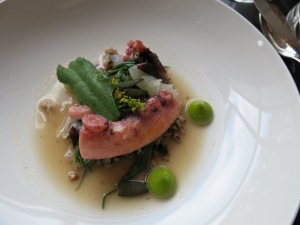 Lisa and I went for the Frumentry (c.1390) Grilled octopus, smoked sea broth, pickeled dulse & Lovage. Throughout the centuries Palmaria palmata called dulse, dillisk or dilsk, sea lettuce flakes a red algae that grows on the northern coasts of the Atlantic Ocean, and has always been an important source of fiber in the British Isles and northern Europe.
Lisa and I went for the Frumentry (c.1390) Grilled octopus, smoked sea broth, pickeled dulse & Lovage. Throughout the centuries Palmaria palmata called dulse, dillisk or dilsk, sea lettuce flakes a red algae that grows on the northern coasts of the Atlantic Ocean, and has always been an important source of fiber in the British Isles and northern Europe.
I love well prepared octopus in any form of cooking, either rock beaten and grilled over 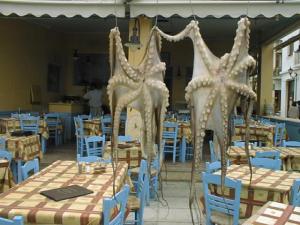 charcoal on a Greek island beach, or my most memorable one at Osteria “LA RISACCA 6” in Milano, Via Marcona, 6 Tel. 02 55181658 – 02 5468041
charcoal on a Greek island beach, or my most memorable one at Osteria “LA RISACCA 6” in Milano, Via Marcona, 6 Tel. 02 55181658 – 02 5468041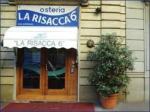 (over 20 years ago), a simple but delicious perfect octopus cut to about 1 inch pieces, cold peeled tomatoes, exquisite olive oil and a touch of herbs– perfection! , so I went for the Octopus dish, as it turned out Lisa ordered octopus as well and we both did not realize this was the most ancient of recipes on our menu 1390 AD from the
(over 20 years ago), a simple but delicious perfect octopus cut to about 1 inch pieces, cold peeled tomatoes, exquisite olive oil and a touch of herbs– perfection! , so I went for the Octopus dish, as it turned out Lisa ordered octopus as well and we both did not realize this was the most ancient of recipes on our menu 1390 AD from the  Forme of Cury (methods of cooking) by The Master Cook of King Richard II, a most becoming dish for Lisa who was raised at Hampton Court Palace, Yes!!! She might not be Royalty but she is Regal a real queen. (Hampton Court Palace as you all know is the Palace of the Tudor Kings and queens, Built to House and feed the kings of England from around 1529-1760 including of course the Court of King Henry the 8th, who used to have up to 600 people for
Forme of Cury (methods of cooking) by The Master Cook of King Richard II, a most becoming dish for Lisa who was raised at Hampton Court Palace, Yes!!! She might not be Royalty but she is Regal a real queen. (Hampton Court Palace as you all know is the Palace of the Tudor Kings and queens, Built to House and feed the kings of England from around 1529-1760 including of course the Court of King Henry the 8th, who used to have up to 600 people for lunch, and not only once, poor kitchen stuff I’m not kidding Ya).
lunch, and not only once, poor kitchen stuff I’m not kidding Ya).
Lisa and I, both loved every moment of our octopus which was perfect to the book a real delight, it was succulent – tender, juicy, and tasty (oxford dictionary)., swimming in a lightly smoked broth with touches of red and green algae and the “leaves in fashion” – Lovage, Its flavor and smell is somewhat similar to celery and top chefs use it lately for all their sea fruit dishes. (too much???)
The Paul Dethune, Brut Grand Cru, Ambonnay, NV Champagne is a grower’s champagne from the Grand Cru village of Ambonnay, Champagne, one of only 17 villages in Champagne with Grand Cru status. I love Ambonnay champagnes. The village’s vineyards are located in the Montagne de Reims region of Champagne, and are all classified as Grand Cru in the Champagne vineyard classification (A Clos-type vineyard in the village is the single vineyard source of Krug’s Clos d’Ambonnay). For map: http://www.libation-unlimited.com/dr-2-champagne-in-ambonnay.aspx . This wine has 70% Pinot Noir and 30%, made by the Dethune family who own 7ha of vineyards in Ambonnay. Though boutique style and fairly unknown this is a wonderfully balanced and rich champagne of outstanding quality The Brut NV is mineral extremely rich yet fresh, with a fine mousse very good length and finesse with aromas of strawberry butter brioche. It has great length and elegance, just what I needed for this celebration.
from the Grand Cru village of Ambonnay, Champagne, one of only 17 villages in Champagne with Grand Cru status. I love Ambonnay champagnes. The village’s vineyards are located in the Montagne de Reims region of Champagne, and are all classified as Grand Cru in the Champagne vineyard classification (A Clos-type vineyard in the village is the single vineyard source of Krug’s Clos d’Ambonnay). For map: http://www.libation-unlimited.com/dr-2-champagne-in-ambonnay.aspx . This wine has 70% Pinot Noir and 30%, made by the Dethune family who own 7ha of vineyards in Ambonnay. Though boutique style and fairly unknown this is a wonderfully balanced and rich champagne of outstanding quality The Brut NV is mineral extremely rich yet fresh, with a fine mousse very good length and finesse with aromas of strawberry butter brioche. It has great length and elegance, just what I needed for this celebration.
 We sank slowly into our private get together with great wine, wonderful view
We sank slowly into our private get together with great wine, wonderful view 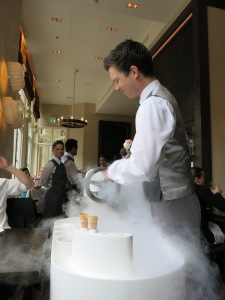 of the park and our very own company reunion, digging in and sampling each other’s dishes between seeps of this fine champagne. Are we having one of the best meals in the world? after all it is quantified and qualified as the 7th best in the world, and first courses are the best platform for a chef/kitchen to show off their ability and imagination, but we are here not to judge but to enjoy, and we are having fun from the company, wine, and the food and thus everything else re: minute details are secondary.
of the park and our very own company reunion, digging in and sampling each other’s dishes between seeps of this fine champagne. Are we having one of the best meals in the world? after all it is quantified and qualified as the 7th best in the world, and first courses are the best platform for a chef/kitchen to show off their ability and imagination, but we are here not to judge but to enjoy, and we are having fun from the company, wine, and the food and thus everything else re: minute details are secondary.
Next post… our main dishes the wine we had, the wines we brought each other, the presents and the wine that rouse the sommelier’s envy yet did not succumb to “restaurant policy”…
Dinner by Heston Blumenthal
66 Knightsbridge, London, SW1X 7LA
Phone: 0207.201.3833
(to be continued…)
YOUR WINEGUIDE
Restaurant: Story, London SE1- a tale of one meal
(press on photos to enlarge)
“I firmly believe that any man’s finest hour, the greatest fulfillment of all that he holds dear, is that moment when he has worked his heart out in a good cause and lies exhausted on the field of battle – victorious.”Vince Lombardi Jr. (June 11, 1913 – September 3, 1970)
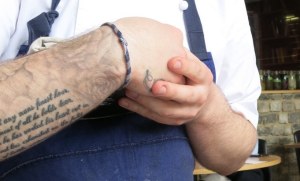 Chef Tom Sellers strongly believes in the inner truth and beauty of this quote of an NFL legendary 1960’s American football coach, to a point that he had these lines tattooed onto his right arm, and strives continuously in the kitchen and on the restaurant floor, to emerge “victorious” at the end of a day’s work. This is probably the Motto of his story…
Chef Tom Sellers strongly believes in the inner truth and beauty of this quote of an NFL legendary 1960’s American football coach, to a point that he had these lines tattooed onto his right arm, and strives continuously in the kitchen and on the restaurant floor, to emerge “victorious” at the end of a day’s work. This is probably the Motto of his story…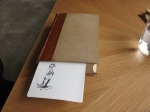
A Story or a narrative is any account that presents events which are directly or indirectly connected, and can be organized as a collection of anecdotes, sometimes legends or myths. It can be told as fiction, such as short stories or novels.
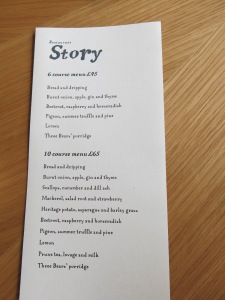 The word Narrative, derives from the Latin verb Narrare, “to tell”, and is related to the adjective gnarus, “knowing” or “skilled”. Narrative is found in all forms of human creativity and art, including writing, songs, film, photography, theater & visual arts amongst which I include a consumable art form: culinary art. They all describe literally or in an abstract form a sequence of events.(from wiki) The narrator always communicates directly to the reader in our case the diner, (the man who came to eat).
The word Narrative, derives from the Latin verb Narrare, “to tell”, and is related to the adjective gnarus, “knowing” or “skilled”. Narrative is found in all forms of human creativity and art, including writing, songs, film, photography, theater & visual arts amongst which I include a consumable art form: culinary art. They all describe literally or in an abstract form a sequence of events.(from wiki) The narrator always communicates directly to the reader in our case the diner, (the man who came to eat).
A meal with a “story” with a certain order (as in a tasting menu), recounts a sequence of events, or series of events, arranged in order, often with causality relationships among the items. A sequence of events can be presented in text, like our menu here. The description of the items or events may include glimpses into time with references to place or time, some information that describes a sequential path, childhood; professional experiences some by clues and some by association, as the STORY menu presents.
 26-year-old Chef Tom Sellers has an impressive CV that includes: Noma, Per Se Thomas Keller’s NY Restaurant (at the age of 18) and later Tom Aikens. Tom Sellers is an experienced young chef who have seen and worked with the best of the rest, has an interesting concept: let me tell you my culinary memories and experiences but you are free to add your own interpretations and tales to them: “Our dream is to inspire people to take their own journeys – creating stories not just of food, but of everything that has played significance and holds a memory. We see food as our story books and want our guests to share this story, leaving their own stories with us along the way…“
26-year-old Chef Tom Sellers has an impressive CV that includes: Noma, Per Se Thomas Keller’s NY Restaurant (at the age of 18) and later Tom Aikens. Tom Sellers is an experienced young chef who have seen and worked with the best of the rest, has an interesting concept: let me tell you my culinary memories and experiences but you are free to add your own interpretations and tales to them: “Our dream is to inspire people to take their own journeys – creating stories not just of food, but of everything that has played significance and holds a memory. We see food as our story books and want our guests to share this story, leaving their own stories with us along the way…“
 Restaurant Story resides in a sort of a modern “Traffic Island Pavilion” close to Tower Bridge. A “Pavilion” is basically a free-standing structure, whose architecture makes it an object of pleasure. Large or small, there is usually a connection between the structure and the idea of relaxation and pleasure in its intended use (from Wikipedia), Restaurant Story follows the above
Restaurant Story resides in a sort of a modern “Traffic Island Pavilion” close to Tower Bridge. A “Pavilion” is basically a free-standing structure, whose architecture makes it an object of pleasure. Large or small, there is usually a connection between the structure and the idea of relaxation and pleasure in its intended use (from Wikipedia), Restaurant Story follows the above  architectural definition to the letter, including the fact that a pavilion is built to take advantage of the surrounding view glazed all around with the Shard in the background. The interiors feel warm and inviting, the open plan kitchen compact yet specious enough for all concerned, around the walls with 2 separated center “Islands” which surprisingly allows enough work space from all sides.
architectural definition to the letter, including the fact that a pavilion is built to take advantage of the surrounding view glazed all around with the Shard in the background. The interiors feel warm and inviting, the open plan kitchen compact yet specious enough for all concerned, around the walls with 2 separated center “Islands” which surprisingly allows enough work space from all sides.
Sellers offers a choice of 2 tasting menus 6-course menu (£45) and inventive 10-course menu (£65) which tell a nostalgic story with amusing twists along the way, to read their story, a candle is lit in an old fashion bed side candle holder… and left to burn and drip and we suspect of nothing unusual…
 We Ordered the house special Bloody Mary (we make it with yellow tomatoes says the sommelier cocktail master, triumphantly seeing the astonishment on spikes face at the sheer color of the drink, and after a sip announced he got what he described as the “best Bloody Mary ever!”
We Ordered the house special Bloody Mary (we make it with yellow tomatoes says the sommelier cocktail master, triumphantly seeing the astonishment on spikes face at the sheer color of the drink, and after a sip announced he got what he described as the “best Bloody Mary ever!” 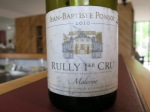 In the meantime I ordered our wine: Jean Baptiste Ponsot, Rully Premier Cru Molesme 2010 (such a good vintage year in Bourgogne)
In the meantime I ordered our wine: Jean Baptiste Ponsot, Rully Premier Cru Molesme 2010 (such a good vintage year in Bourgogne)
An array of stunningly beautiful and tasty amuse-bouche unfolded on our table, all exhibiting extremely high technical skills, good taste and pairing knowledge.
Crispy Cod skin, cod Roe and carrot tips
Radish stuffed with seaweed butter
Nasturtium flowers stuffed with oyster emulation zabaglione style
Oreo biscuits of calamari ink
“Fish fingers” of diced Rabbit meat topped with 3 different coloured carrots
 These are sort of personal reminiscences of childhood with references to
These are sort of personal reminiscences of childhood with references to early “culinary” memories of home and school “delicacies” (only by shape and colour), like fish fingers, Oreo biscuits with a twist, cod and radishes all upgraded from their memory wonders to present time delicacies, the cod skin and touch of the melting Oreo biscuits to die for…
early “culinary” memories of home and school “delicacies” (only by shape and colour), like fish fingers, Oreo biscuits with a twist, cod and radishes all upgraded from their memory wonders to present time delicacies, the cod skin and touch of the melting Oreo biscuits to die for…
As the candle continues to melt down into the collecting dish at the base, the Ponsot, Rully Premier Cru Molesme 2010 is poured and our first course is presented:
Bread and dripping. (Tom’s dad fav.)
Hi-Story
Dripping was used for cooking in the inter war years, especially in British cuisine, in the Midlands and Northern England (Tom Sellers is a Nottingham boy), Dripping was popular among poor families hit by unemployment for bread spreading instead of butter, a proper use of food leftovers that includes the byproducts of any meat they were lucky enough afford.. Dripping could also be bought at the butchers, for spreading on bread. Old-fashioned chip shops used to fry their chips in beef dripping.
Sumptuous Poppy seeds sourdough wholemeal bread accompanies a bowl of small cubes of veal tongue and celery bathing in a sour reduction of chicken consommé that balances the well seasoned fattiness of the collected drippings off the base of the candle. These will be left on the table for the entire meal as your butter substitute for spreading on your bread. I used to say that all you need is excellent bread and great butter, good quality well spiced dripping can be an equaled substitute.
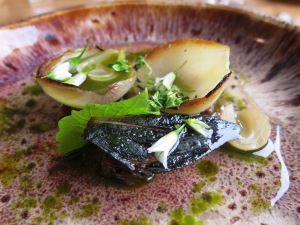 Burnt onion, apple gin and thyme(I love gin T.S)
Burnt onion, apple gin and thyme(I love gin T.S)
This is a trio of onions: grilled / burnt, grilled / baked, on a base of confiture d’oignon, or sweet onion chutney, dresses with a Vinaigrette of apple gin thyme and olive oil with a nice spiced gin aftertaste and thyme aroma, simple, witty and quite delicious.
Scallops, cucumber and dill ash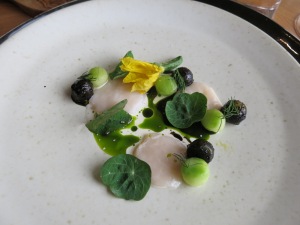
This is spring on a plate, Carpaccio of scallops on a lightly dressing of lemony emulation, with ultra fresh cucumbers balls loaded with cucumber green scent and flavor, some rolled in dill ash for complexity and the spring signature of dwarf fiore de zucca (courgette flowers still attached to the tiny courgette) and Nasturtium (monks hat) leaves, so refreshing and green scented, light and beautiful.
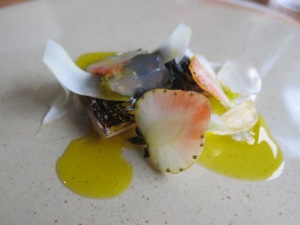 Mackerel, salad root and strawberry
Mackerel, salad root and strawberry
I’m not a great fan of oily mackerel, but I must admit the inner balance of the dish without the usual smoked mackerel smell was a delight with the cream fresh at the base and pale strawberries, even I can get used to mackerels after all…
Heritage potato, asparagus and barley green
There are not many dishes as comforting as well mashed potato with butter This mash is made to perfection Joël Robuchon style with the slightly nutty ratte potatoes, a 19th-century classic beloved by French chefs. This butter rich purée of heritage potato comes with asparagus curls and heads, fresh barley grass and inky-black ‘coal’ sauce. So simple yet so alluring for more, we finished the
to perfection Joël Robuchon style with the slightly nutty ratte potatoes, a 19th-century classic beloved by French chefs. This butter rich purée of heritage potato comes with asparagus curls and heads, fresh barley grass and inky-black ‘coal’ sauce. So simple yet so alluring for more, we finished the 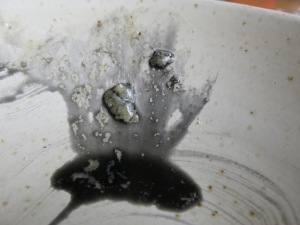 plate to the base the bit of coal sauce left on the plate allowed us to perform our very own “coffee reading” – Tasseography (for Chef Sellers) It is a fortune-telling method that interprets patterns at the base of a cup/dish of tea leaves, coffee grounds, or wine sediments and left over coal sauce in this case… As you can very well see our young chef will burst triumphantly like a Volcano and slowly affect all at his lava flowing mountain sides…
plate to the base the bit of coal sauce left on the plate allowed us to perform our very own “coffee reading” – Tasseography (for Chef Sellers) It is a fortune-telling method that interprets patterns at the base of a cup/dish of tea leaves, coffee grounds, or wine sediments and left over coal sauce in this case… As you can very well see our young chef will burst triumphantly like a Volcano and slowly affect all at his lava flowing mountain sides…
Beetroot, raspberry and horseradish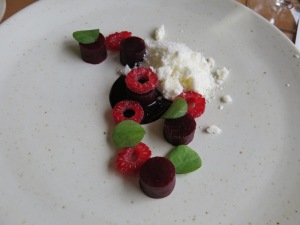
Tucked in between two rich dishes (nothing is really too heavy about this pleasurable lunch) a refreshing combo of beet cubes, and sliced raspberries on a lightly sweet raspberry coulis with a strong horseradish powdered granita / sorbet. These are contrasting flavours that work so well together, NICE!
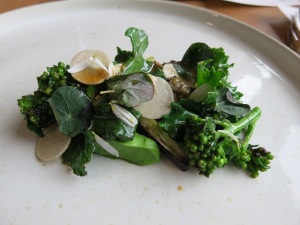 Pigeon, summer truffle and pine
Pigeon, summer truffle and pine
The pigeon breast is hidden underneath the foliage and Broccolini (a green vegetable similar to broccoli with small florets and long, thin stalks) blanched broccolini, baby leaves, and broccolini purée con=ver (at first) the well prepped breast tender and gamy with a light pigeon jus. The “summer truffles” are hardly felt if at all and thankfully do not overpower the dish. Also finishe to the very last crumb (I love pigeon)
A palate cleanser of lemon and lime in varying degrees of sourness and four different consistencies, a cruncy lemon meringue “biscuit” lemon sorbet, lemon crème patissière and lime and yuzu ユズ, tasting jus. A perfect cleanser and palate refresher.
Our deserts
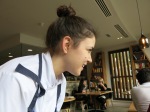 These are still part of the story with personal addition of Ms. Francesca Mossa the young pastry / desert chef.
These are still part of the story with personal addition of Ms. Francesca Mossa the young pastry / desert chef.
Soaked Prunes, lovage infusion, and crepe of curdled boiled milk and a touch of salt flakes…
Three Bears Porridge
The finale is an amusing Goldilocks and the three bears inspired desert presented both on a card with each bear holding a bowl either too salty, too sweet or just right porridge.. followed by three bowls of oats porridge, fresh shaved Kentish cobnut which taste accordingly, spiced in turn with salted caramel; comb honey, condensed milk , fruits and flowers, in a set of fairytale dishes and handmade oven clay spoons.
They say: “We have created a personal journey through food, which has been crafted and inspired by the journeys of others and ourselves. Our dream is for all guests to leave a book at Story, which will remain there to evoke the inspiration in others that we hope our food will evoke in you. We look forward to sharing our stories”
And we say: Thanks for the stories and the memories, thanks for trying and succeeding to please us (and the other guests). You told us a story using the art of narrative which is by definition a highly aesthetic enterprise, with identifiable beginning, middle and end. The narrative is not in the cooking or the food, but in the plot imagined and constructed by the diners. This notion applied to storytelling through food was attempted here at “Restaurant Story”. Personally I got what I expect nowadays from a meal at a restaurant, I want the restaurant to excite me almost as a child, cooking properly is just not enough anymore an excellent meal cooked even to perfection may not be sufficient, and I do not mean I expect fireworks and odd tricks or paraphernalia, just good food which is also witty and FUN.
 The meal at Story has the edge of excitement which goes hand in hand with cooking techniques, presentation, Visual and taste aesthetic values. Inner balance of each dish, correct product pairing within each dish, and between the various dishes on the menu. As their story unfolds into its climax, in the (only) dish that actually requires cooking skills (the pigeon), I was filled with the joy and satisfaction. You may say I was content, isn’t that what’s it all about?
The meal at Story has the edge of excitement which goes hand in hand with cooking techniques, presentation, Visual and taste aesthetic values. Inner balance of each dish, correct product pairing within each dish, and between the various dishes on the menu. As their story unfolds into its climax, in the (only) dish that actually requires cooking skills (the pigeon), I was filled with the joy and satisfaction. You may say I was content, isn’t that what’s it all about?
The story of Tom Sellers of Nottingham and his “merry man” (a generic term for any follower or companion of an outlaw, knight, or leader/chef) is yet to be told, Tom Sellers still has a way to reach the NFL finals but he is certainly approaching a stand in the WCL (World culinary league) Playoffs, and this is a great start for an extremely talented chef as young as he is, he is a  narrator – gnarus, has the knowhow and the skill required to head a successful kitchen Chapeau!
narrator – gnarus, has the knowhow and the skill required to head a successful kitchen Chapeau!
Restaurant Story: 201 Tooley Street, London SE1, 020-7183 2117.
Tues-Sat, lunch noon-2pm, dinner 6.30-9pm
Book well in advance!
YOUR WINEGUIDE













































































